Zadar, Croatia
Road Trip in Northern Croatia: 5-day itinerary
Last May, we left Brussels by car to do a road trip through Central Europe. A way for us to avoid flying while continuing to travel. During this European road trip, we spent 5 days discovering part of Croatia. We fell in love with Croatia, its national parks, lakes, nature and typical towns.
Through this article, we share with you the stages of our itinerary, the good addresses, the budget and all the practical information to prepare your road trip to Croatia.
Traveling in Croatia, useful information
When to go to Croatia?
The climate in Croatia is divided into 2 parts: the coast and its islands enjoy the Mediterranean climate while the inland benefits from a continental climate (a bit like Belgium).
The months of May, June, July, August, and September are ideal for enjoying Croatia even if temperatures can sometimes be hot in the centre of the country on certain days. If you have the opportunity, we advise you to prioritise the off-season periods (May/June/September) to avoid tourist crowds and take advantage of low or mid-season prices for activities (prices can quickly soar during peak season).
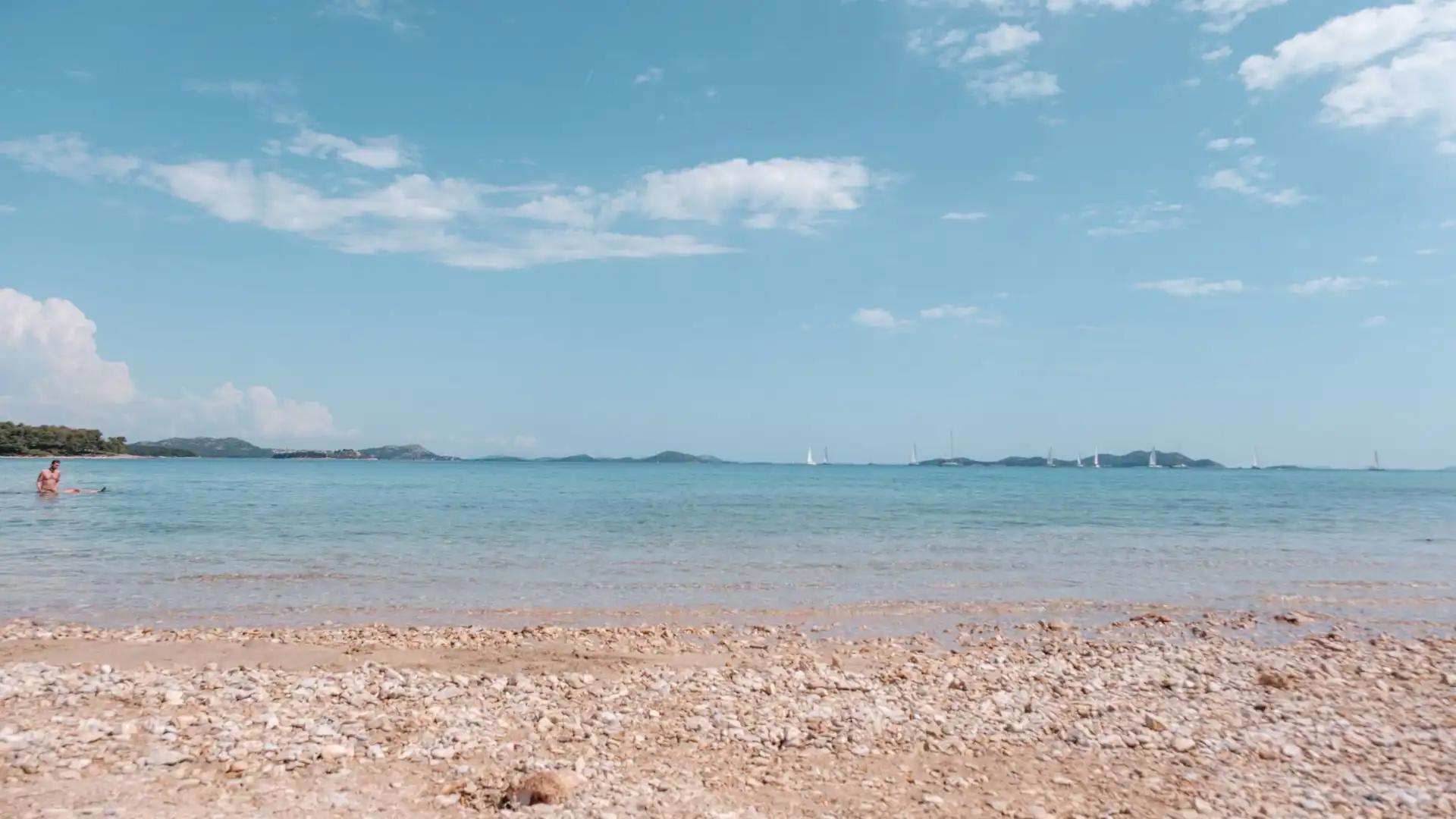
What is the best time to visit Croatia?
Going to Croatia by car
In our case, we traveled to Croatia by car during our road trip through Central Europe. As explained at the beginning of the article, we want to limit our air travel and prioritize other modes of transport for travel.
Reaching Croatia by car from Brussels is a bit like going to the south of France (between 13 and 15 hours for northern Croatia). You just have to consider the vignette and other tolls of the countries you cross. For example, we found the crossing of Austria very expensive: ± 30€ (2 tunnels + the vignette).

Is it easy to drive a car in Croatia?
We haven't noticed a big difference between driving in Belgium and Croatia. Local drivers are rather calm on the roads compared to neighbouring countries. Be aware that a large majority of motorways are toll roads in Croatia. You can configure navigation apps like Google Maps or Waze to avoid tolls, but this will add a little extra time to your journey. A good excuse to travel slower and enjoy the scenery.
Traveling to Croatia by bus
It is possible to take a bus from Brussels to Croatia. The bus company Flixbus offers direct (or indirect) journeys to several Croatian cities. The journeys last between 20 and 30 hours. For travel within the country, the Croatian bus network has a good reputation. The Croatian tourism website gives you all the information for traveling by bus.
The duration of the journeys may seem long, but why not take the opportunity to make a stopover in Vienna or another city along the way?
Traveling to Croatia by train
Train is the preferred mode of transport for a responsible trip because it produces few CO2 emissions. It is possible to reach Zagreb from Brussels by train in less than 20 hours (and with several connections).
Again, this might be a chance to take your time on the journey and stop in one or another major city along the way to Croatia. And why not get an Interrail ticket and turn your journey into a train-based backpacking trip? Find all the information on the Interrail website.
Staying in Croatia
We stayed in one of the studios of Apartments Star, 2 kilometers from the city center of Zadar. Renovated a few months ago, the two studios include everything you need for a few days' stay. The apartment is quiet and we slept like babies (we certainly had a few hours of sleep to catch up on from our previous accommodations).
And the icing on the cake, the owners were lovely. We were treated to crêpes one evening and a bottle of wine from their own production another day. It was very nice to chat with them, about their culture, their passions and the things to see around.
You can book with them via Booking.comBooking.
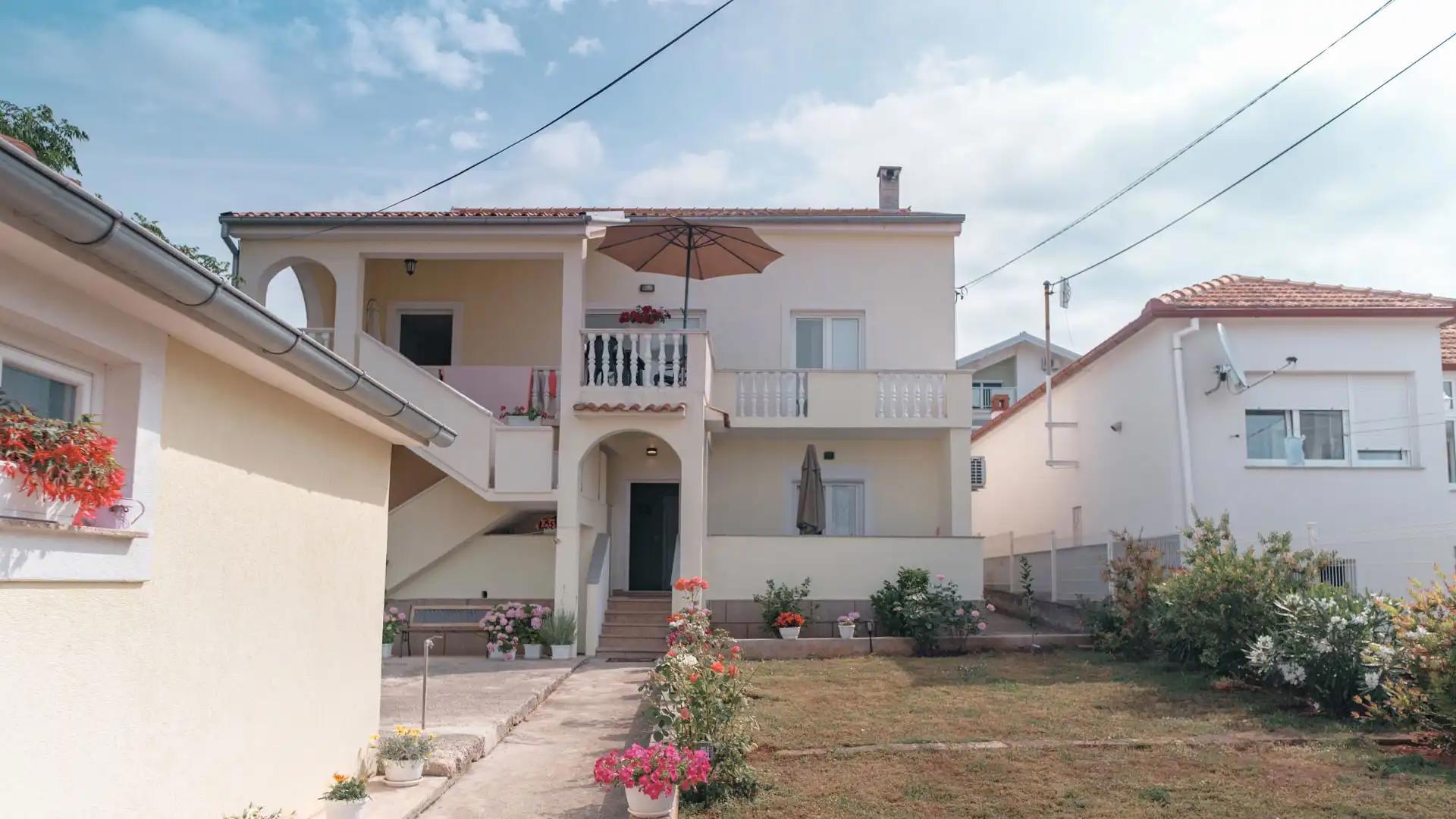
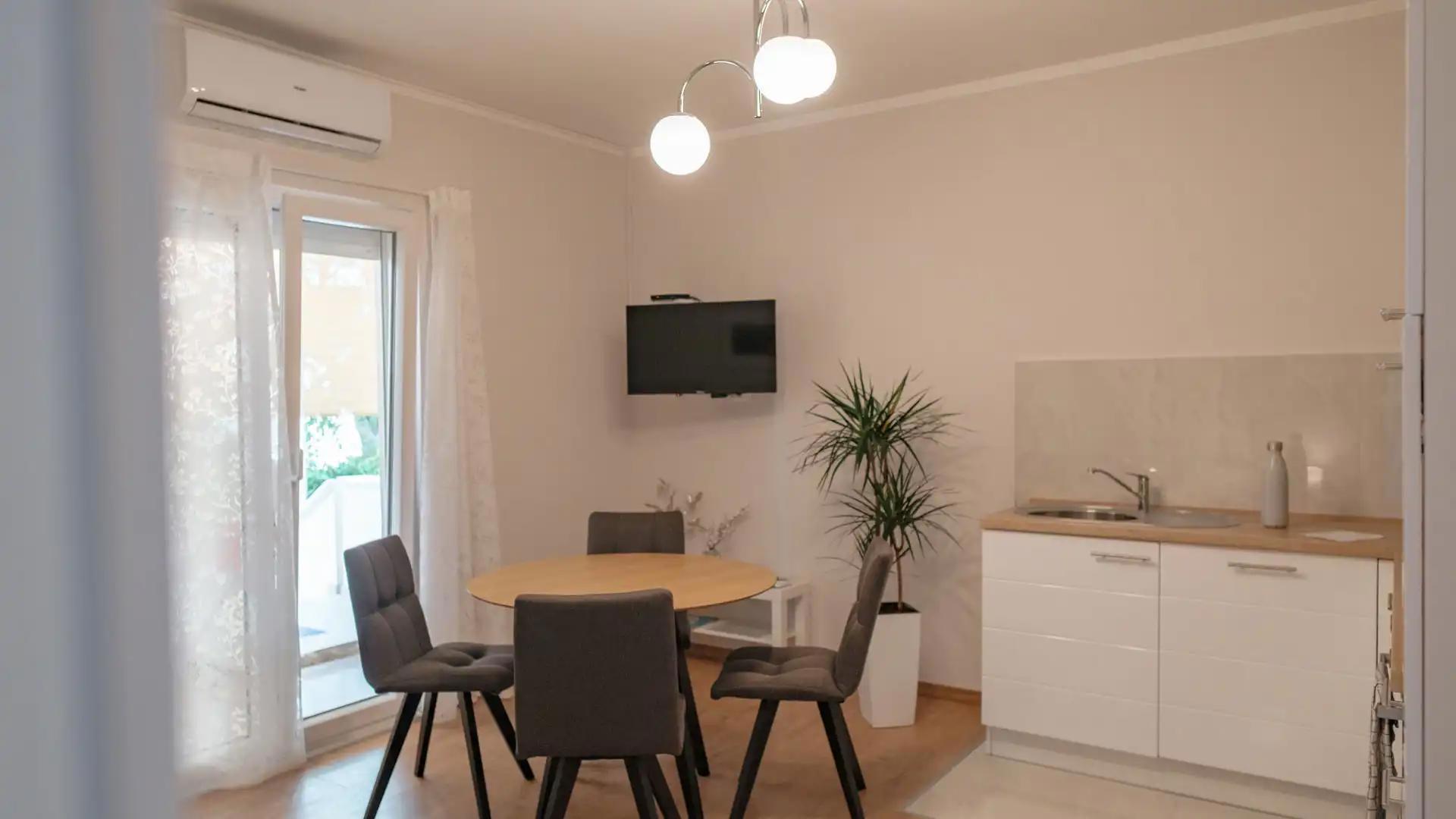
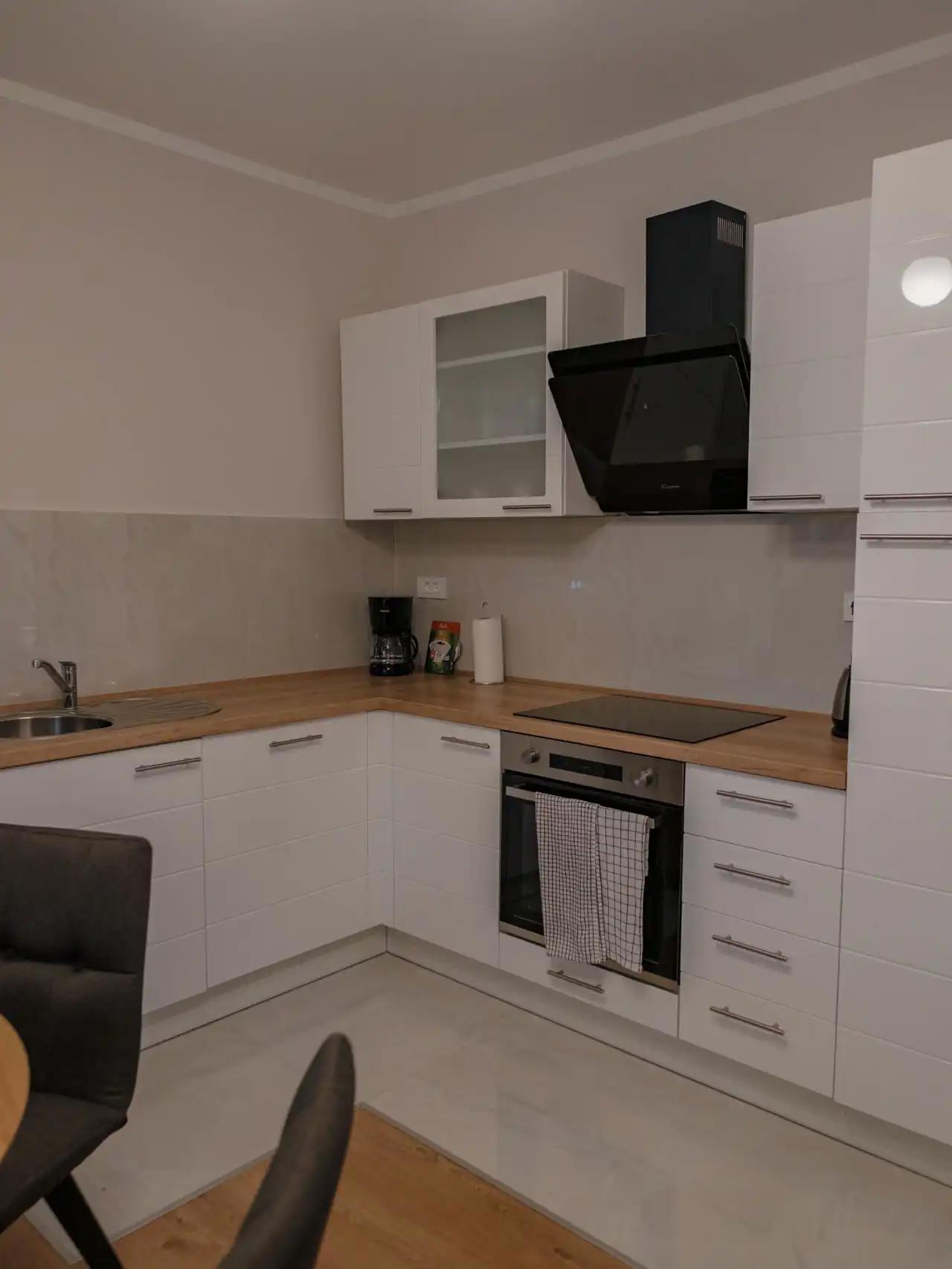
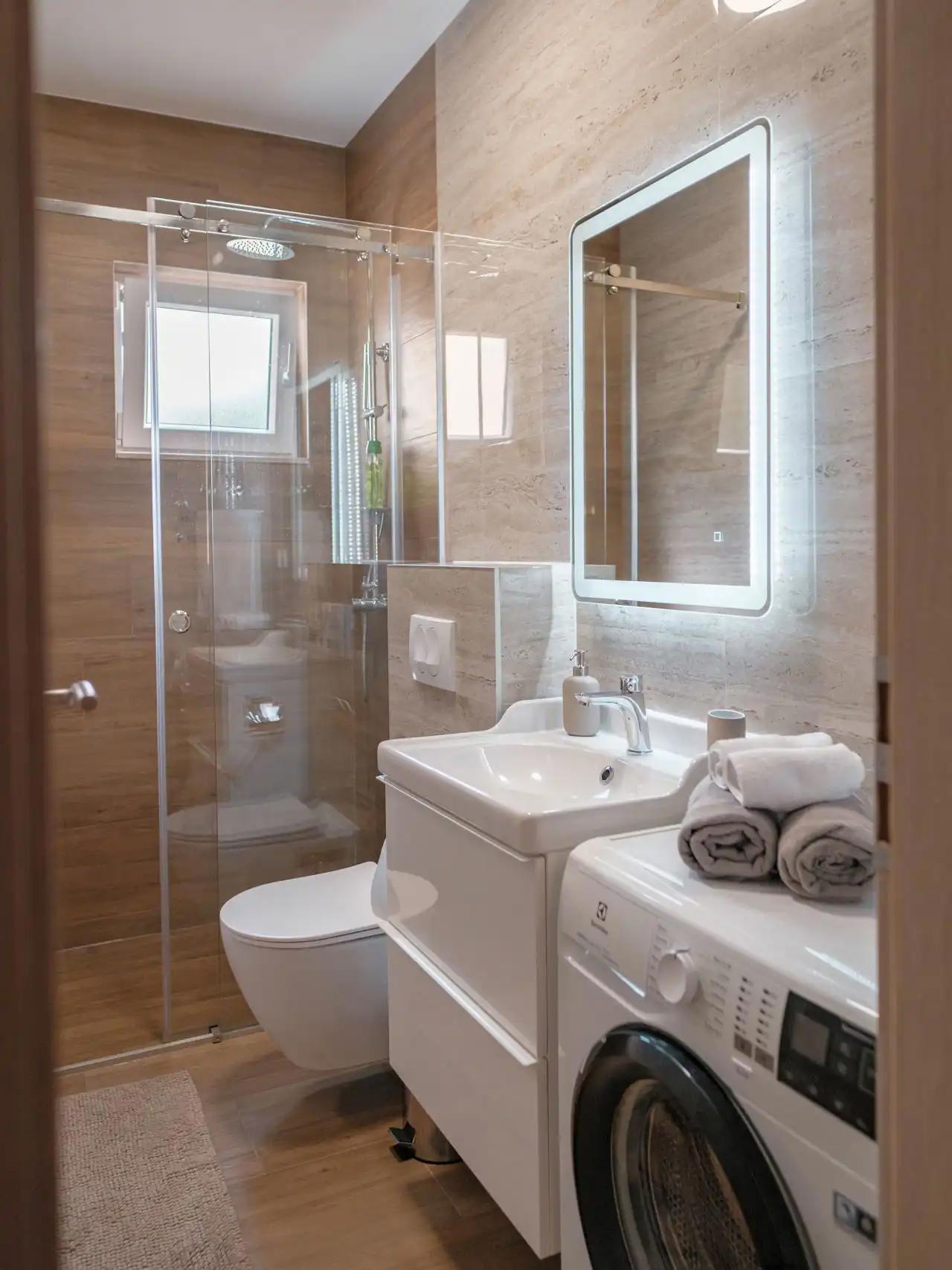
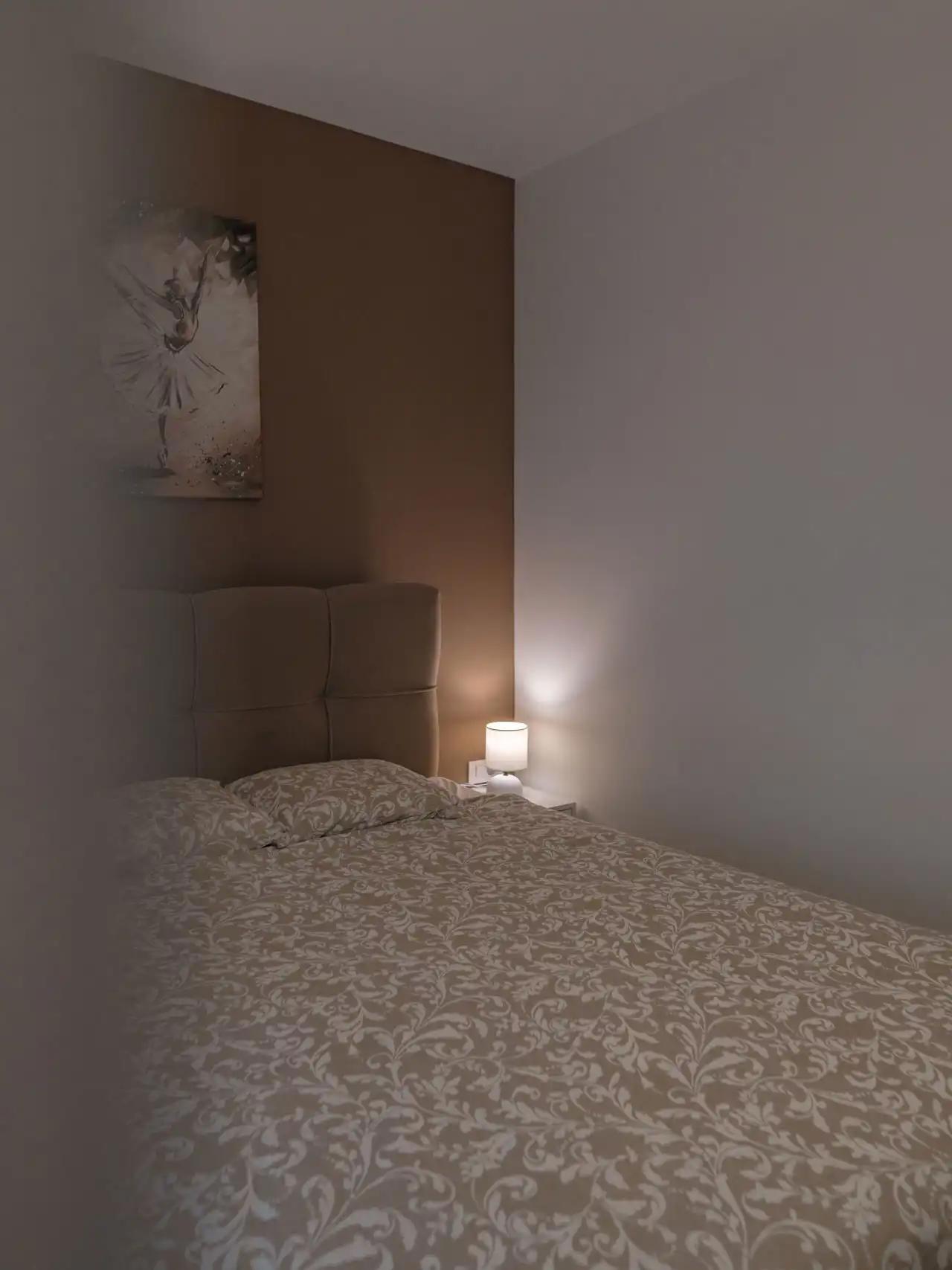
What is the currency in Croatia?
Since January 1, 2023, Croatia is part of the eurozone. In addition to numerous ATMs, it's easy to pay with a Visa card. To avoid foreign transaction fees, we both have a Trade Republic bank card with Romain.
What language is spoken in Croatia?
In Croatia, Croatian is spoken. Communicating in English with the locals can be difficult (not everyone has a very good level). In tourist areas, we didn't have any trouble making ourselves understood.
Our 5-day itinerary in northern Croatia
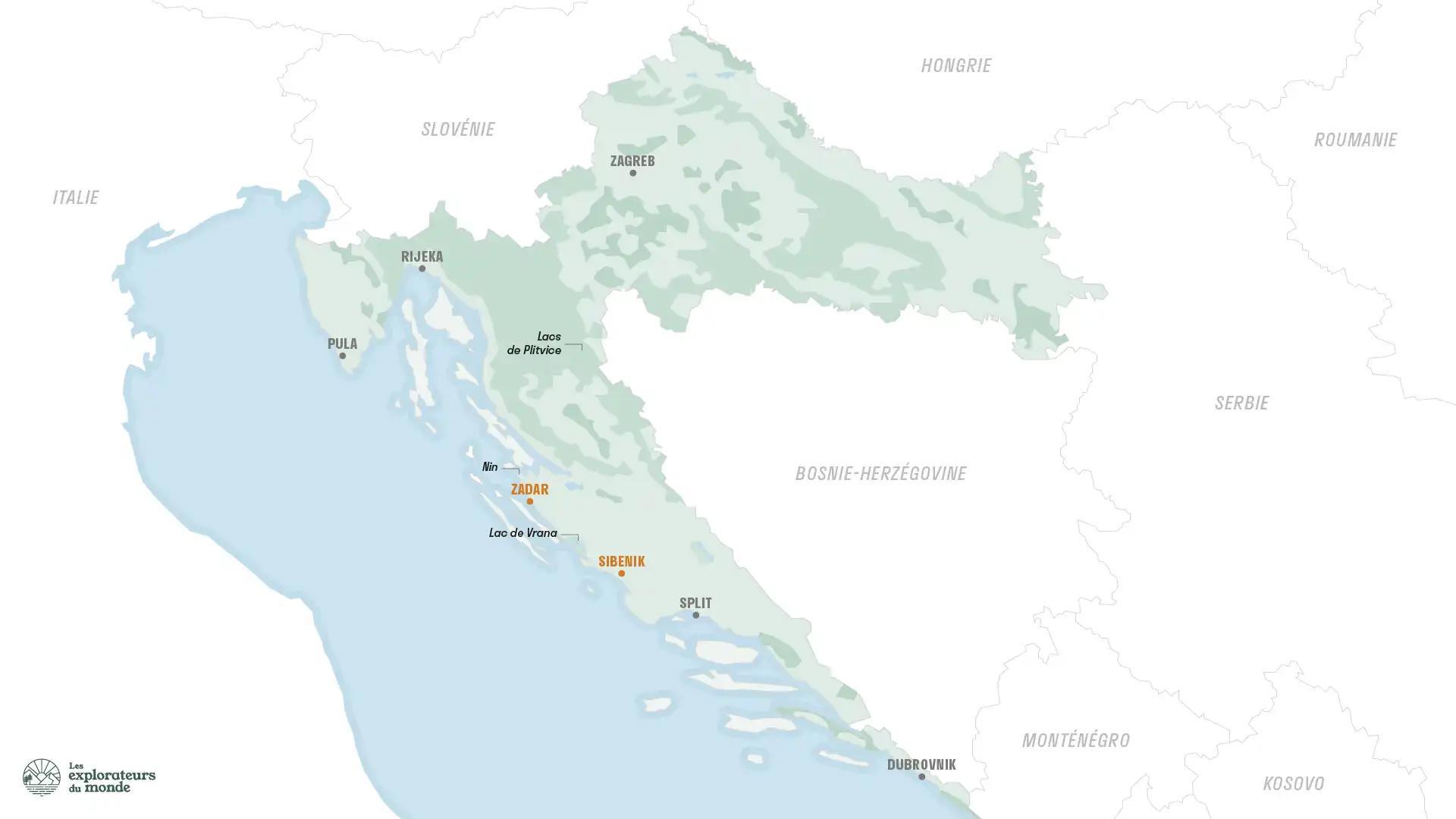
Day 1: Arrival in Croatia | Overnight in Plitvice
Day 2: Plitvice | Route to Zadar | Overnight in Zadar
Day 3: Visit of Zadar + Sunset from the Sea Organ
Day 4: St. Anthony’s Canal (Walk) + Sibenik + Sunset in Nin
Day 5: Vransko Lake + Beach | Overnight in Zadar
Day 6: Route to Slovenia
What budget to expect?
For 6 days in Croatia and 5 nights, we spent ± 560 €. This is approximately €46 per day per person. We did few activities and cooked all the meals ourselves, which kept our budget in check.
Accommodation: €280 • Restaurants: €27 • Groceries: €75 • Gas: €60 • Tolls: €45 • Activities (including €7 for parking): €57
Our itinerary in detail
Day 1 & 2: Exploring Plitvice Lakes National Park
Our Croatian adventure begins with a visit to the unmissable Plitvice Lakes National Park. After a day's journey from Budapest and a stop in Tihany, a small village on Lake Balaton (the largest lake in Central Europe), we arrive late in the afternoon
in the Plitvice Lakes region.
We chose to stay the night before to be able to take advantage of the opening of the first Croatian national park. We've detailed our visit to Plitvice Lakes National Park in an article, including practical information and all our tips for visiting it comfortably.
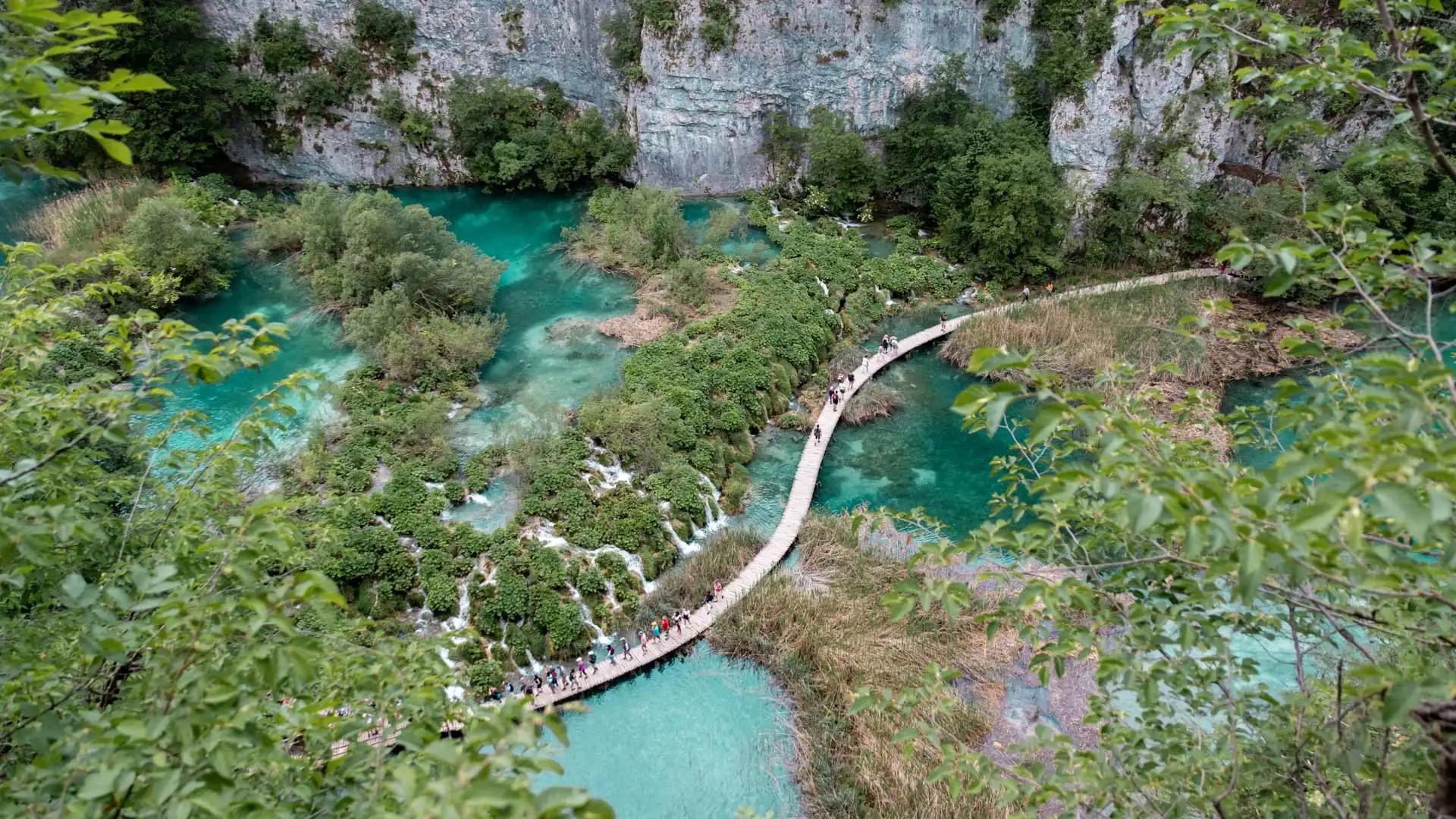
Once our visit to the Plitvice Lakes is finished, we hit the road. Destination Zadar, for a few days on the Adriatic coast, a 2-hour drive from Plitvice.
Day 3: Visit to Zadar
For this 3rd day in Croatia, we set out to discover the small fortified town of Zadar. Listed by UNESCO, it offers a rich cultural and historical heritage. We enjoyed a beautiful day walking the streets, alleys and discovering its seaside. We returned late in the evening to watch the sun set (timidly) over the sea. A magical moment to the sound of the sea organ.
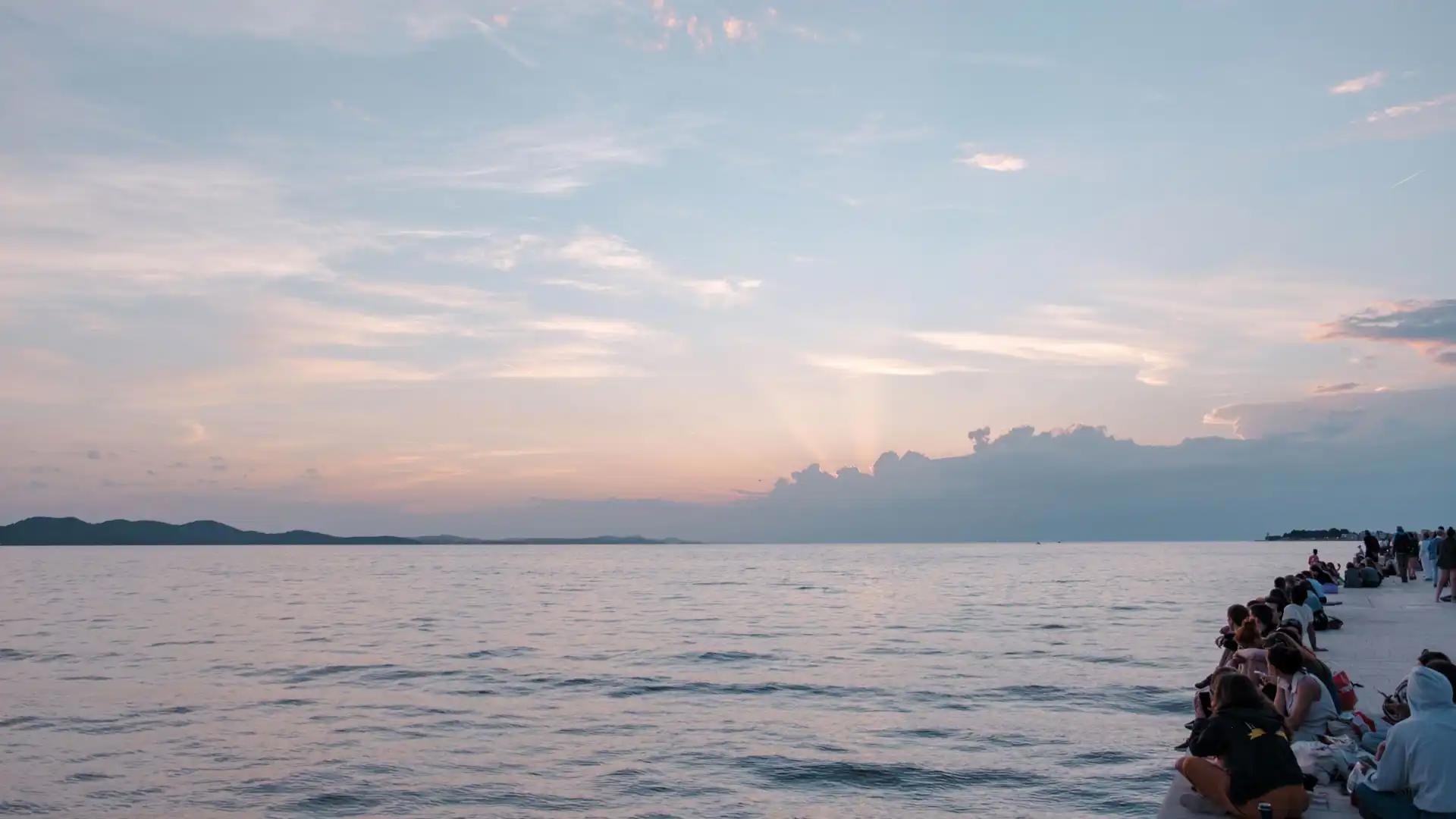
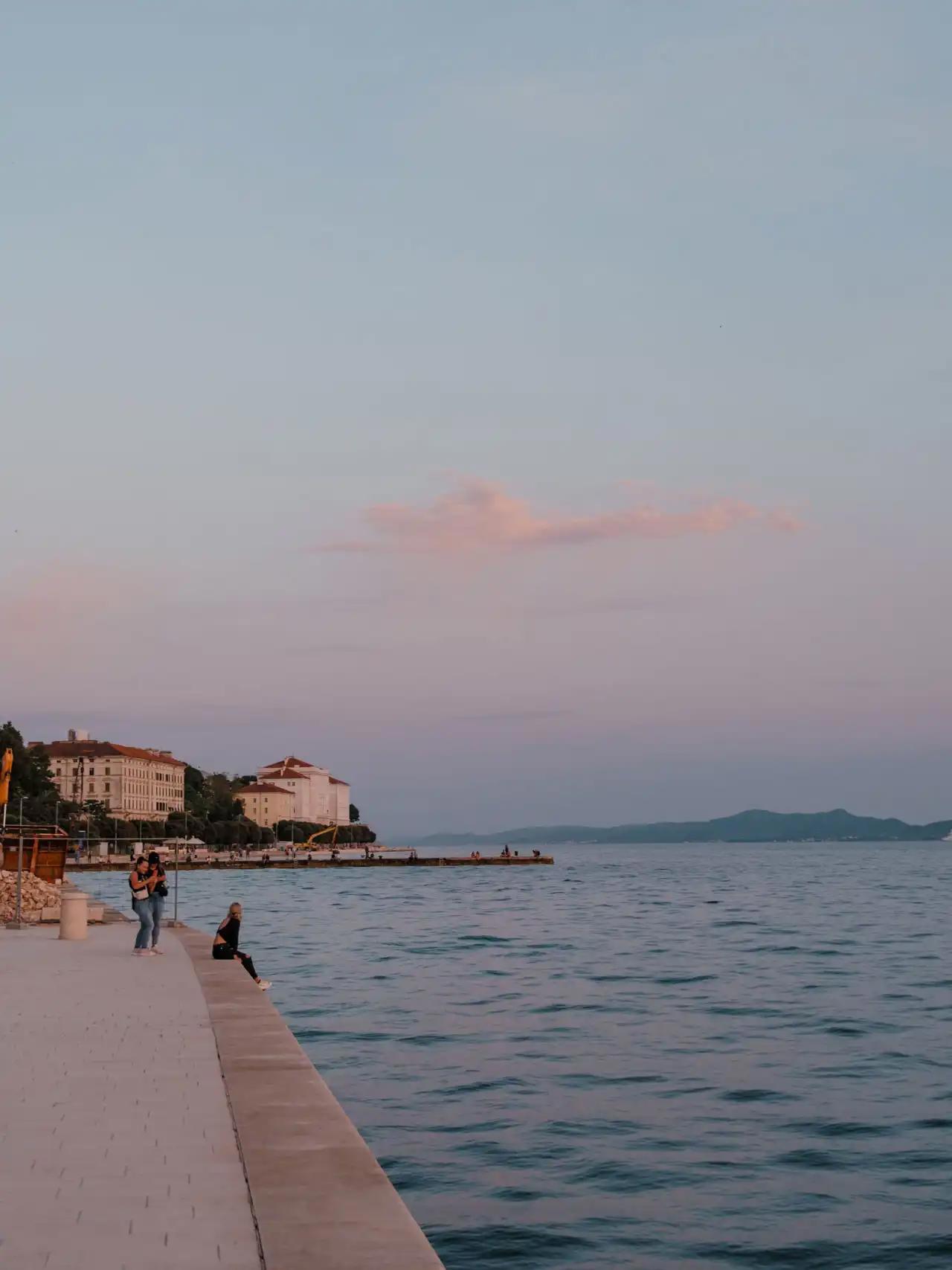
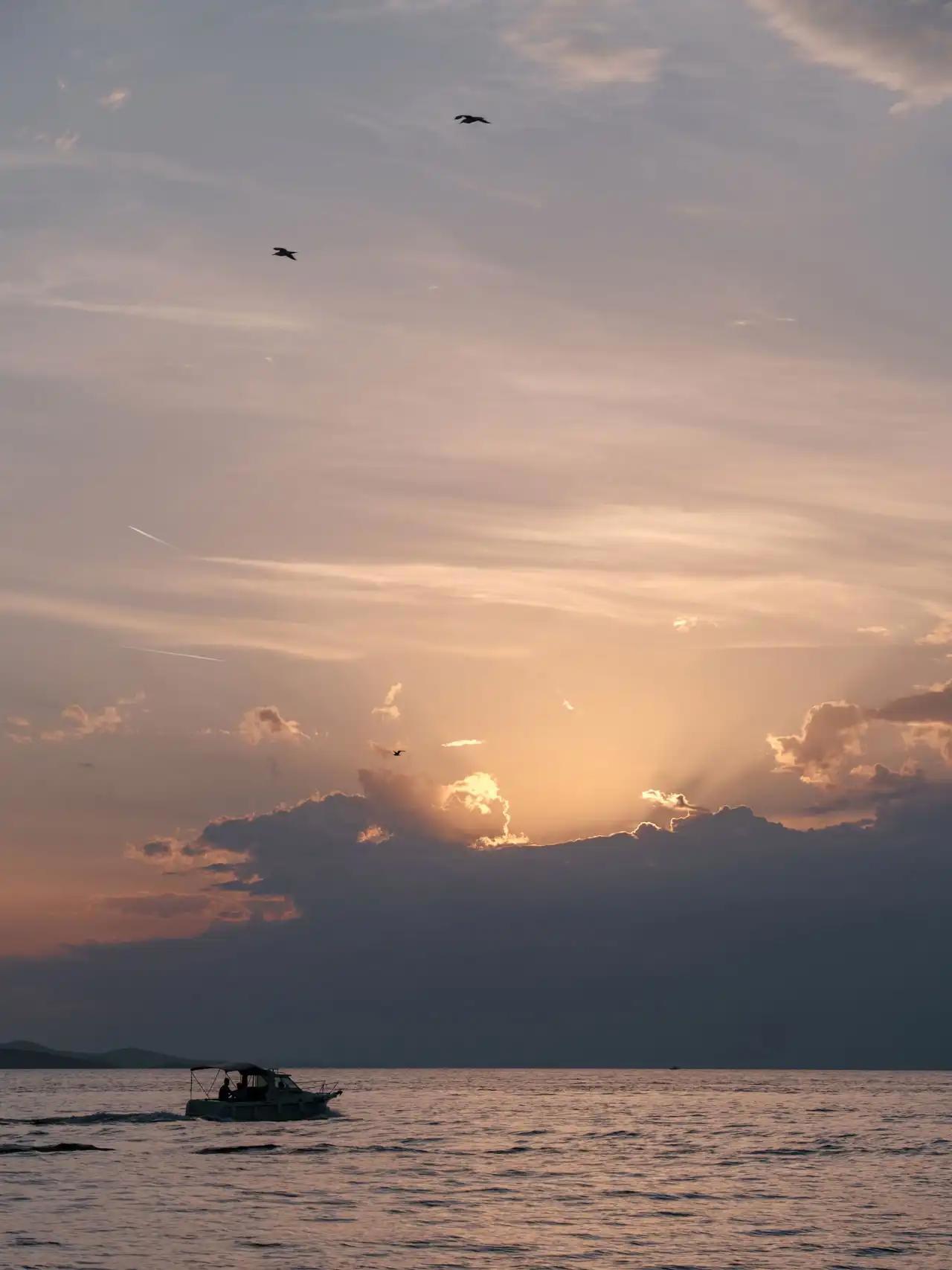
What to see in Zadar?
📍 The small port of Fosa: to have a beautiful panorama of the port, don't hesitate to go to the Madijevka Queen's park.
📍 The city walls & its magnificent gates. Below, the gate of the Mainland.
📍 The Saint-Donat church, the Saint-Anastasie cathedral and its bell tower right next to it.
📍 The Roman Forum
📍 The Saint-Elijah church
📍 The Square of the 5 wells
📍 The sea organ, from where you can observe magnificent sunsets.
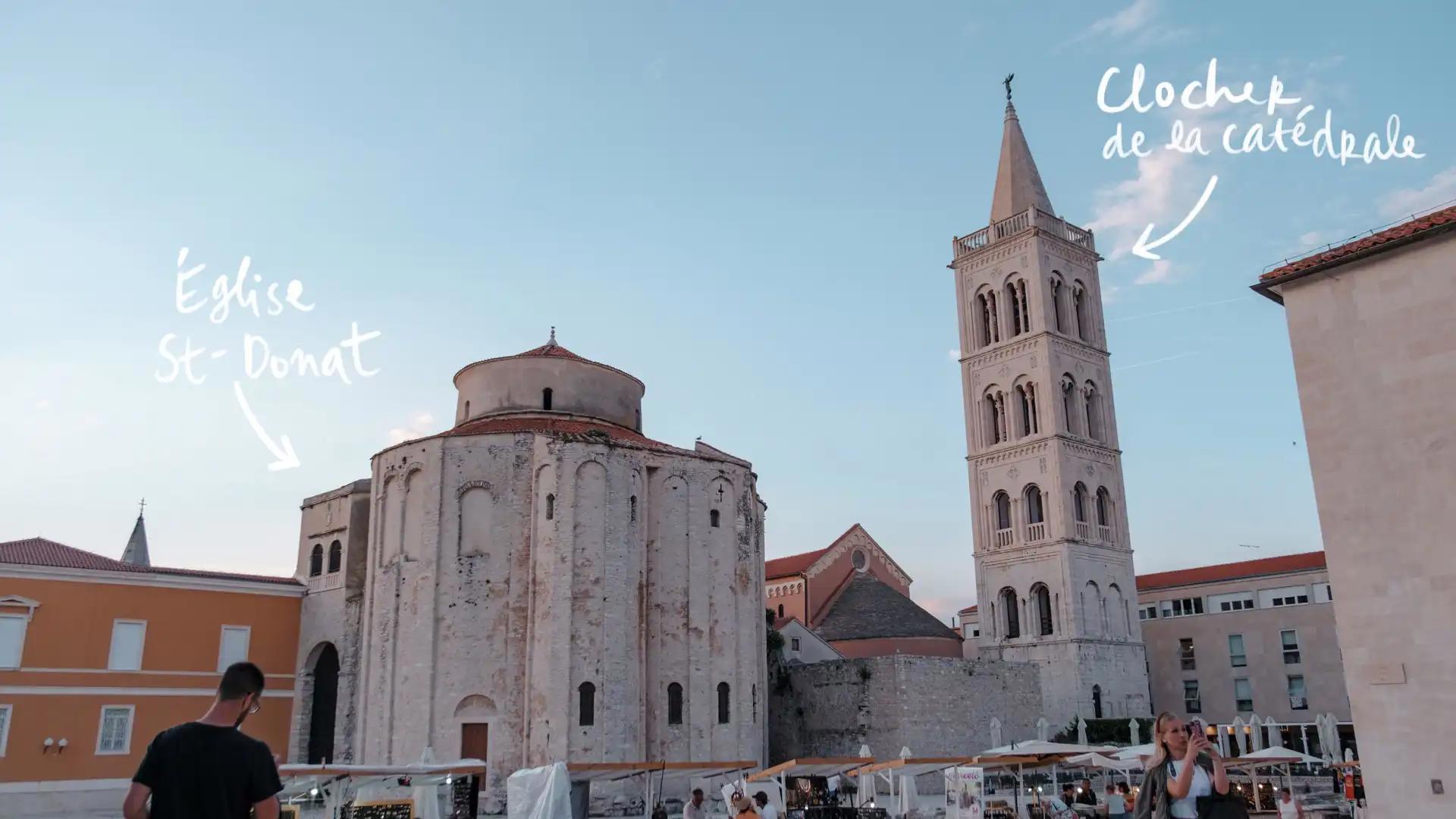
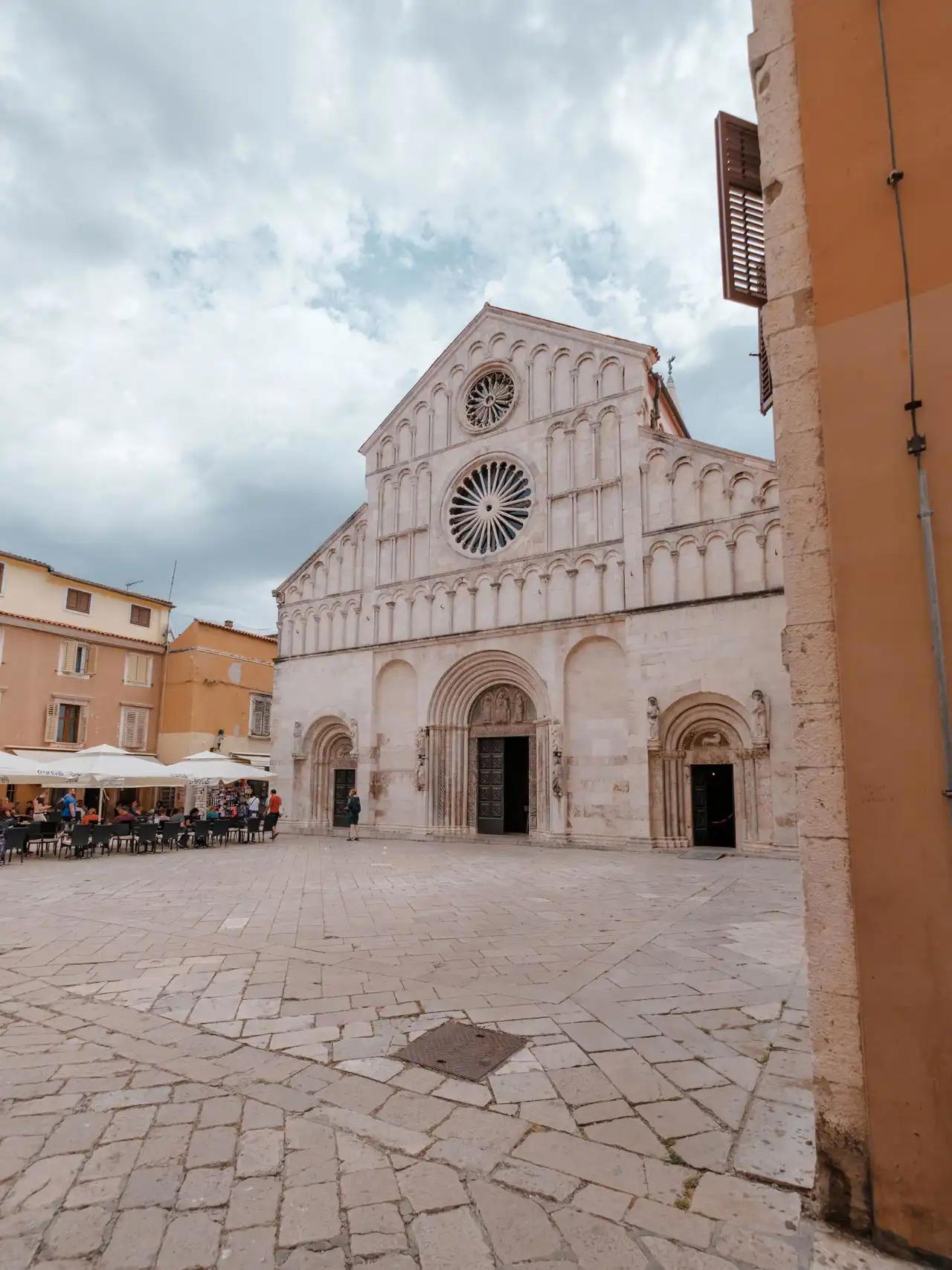
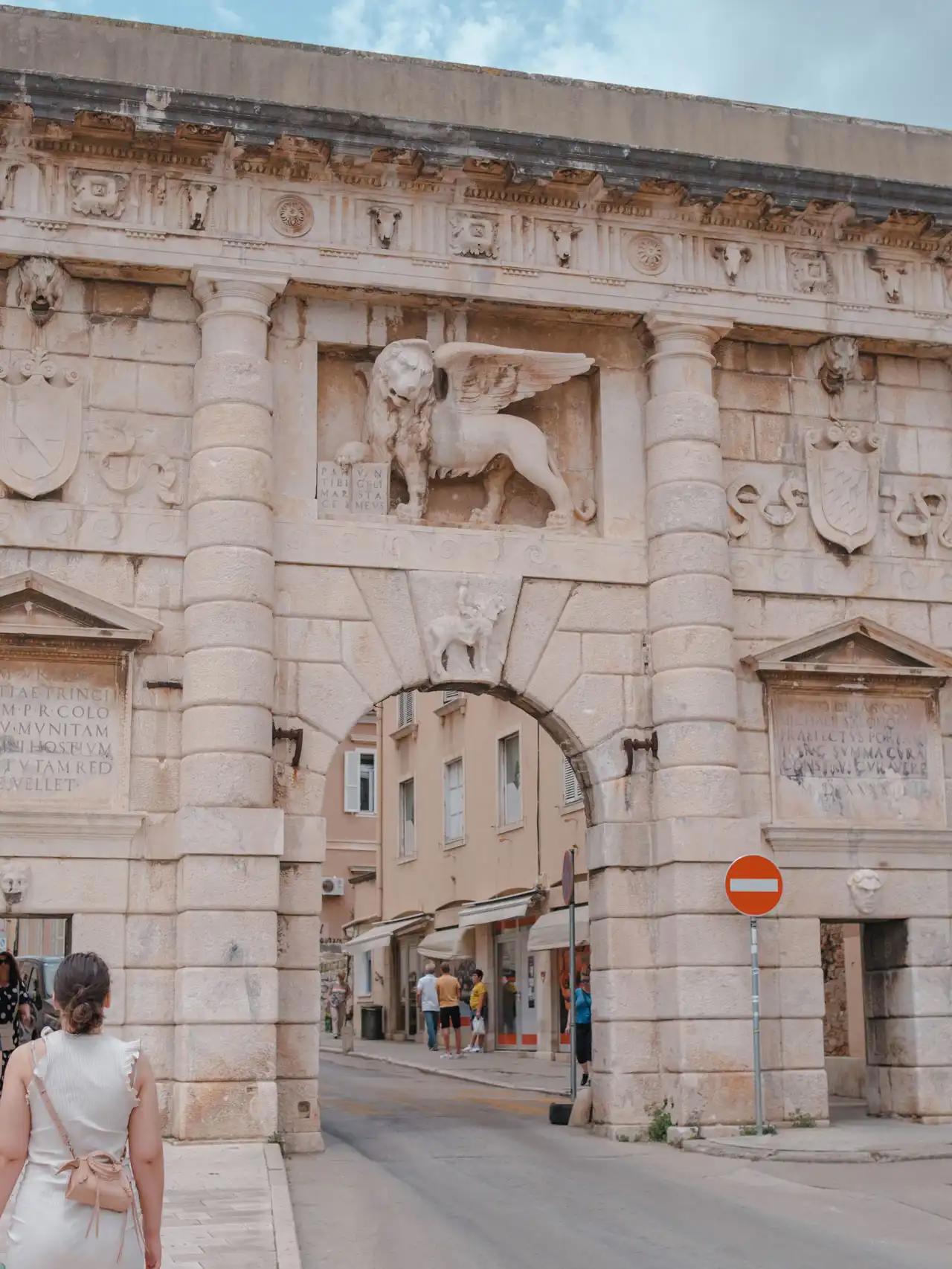

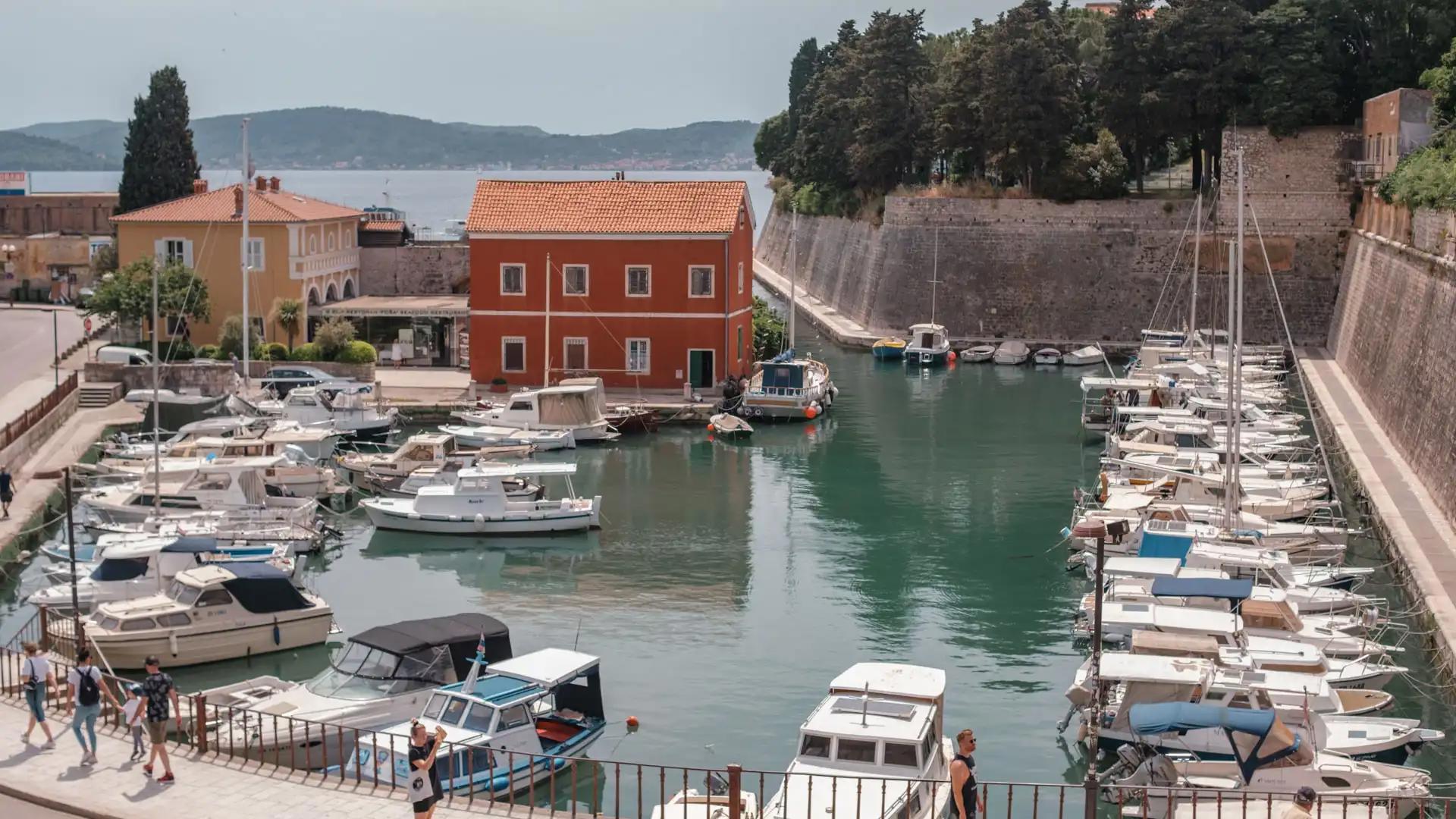
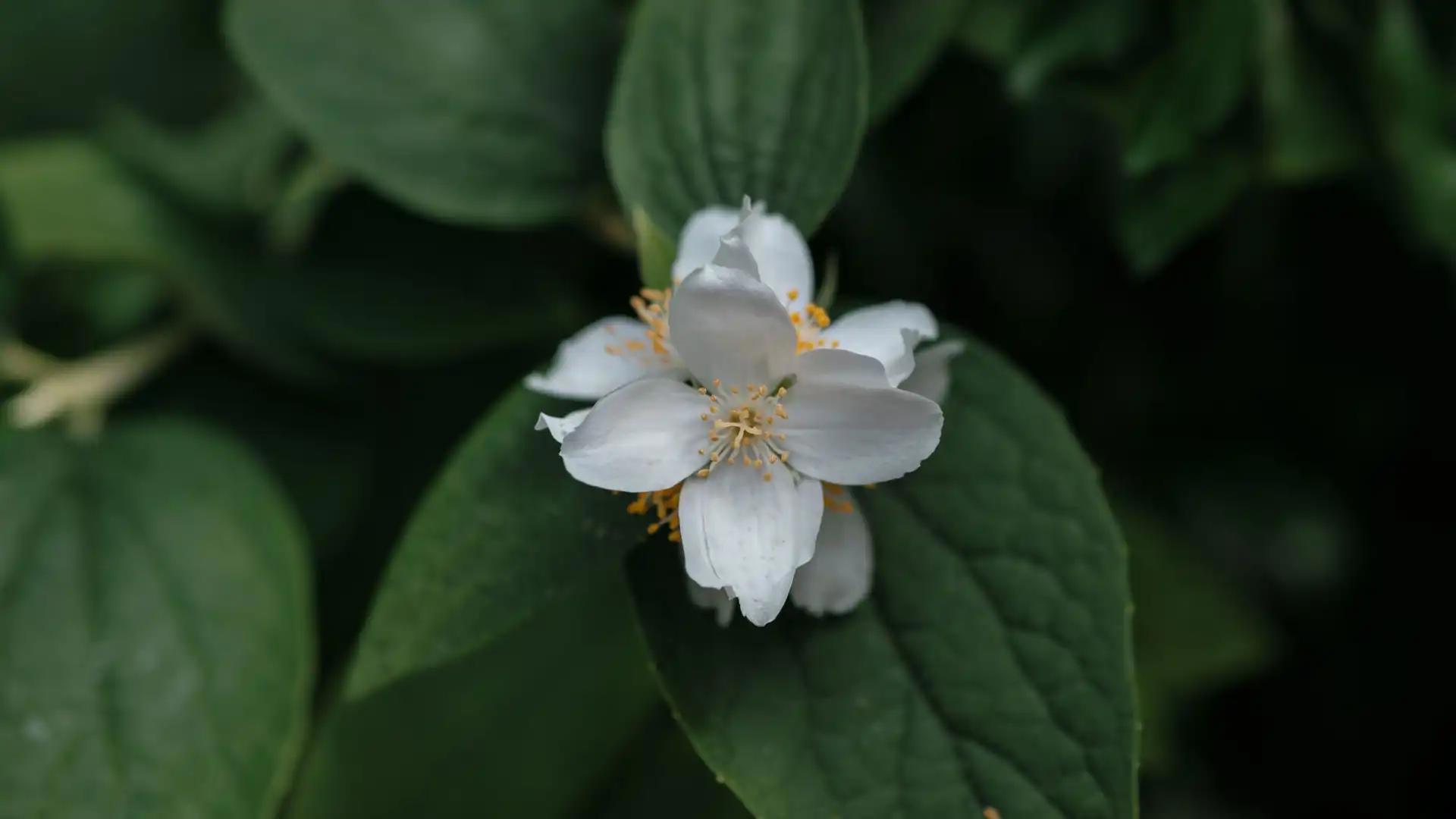
OUR TIPS FOR VISITING ZADAR
✳︎ The historic center of Zadar is not very large, you have plenty of time to tour it in one afternoon.
✳︎ A must-see is to watch the sun set from the sea organ. The weather was mixed during our stay and we were only able to enjoy a timid sunset.
✳︎ We found a free parking a few minutes' walk from the historic center. We never had trouble finding a space, but in high season we imagine it must be very full!
Day 4: Hike to the Saint-Antony Canal, visit of Sibenik and sunset in Nin.
Hike to the Saint-Anthony Canal
For this fourth day, we had planned a hike to the Saint-Anthony Canal. Unfortunately, the wind was fresh and, like good tourists, we hadn't planned any jacket or sweater for the day. We only did a round trip to the Saint-Nicholas Fortress (which is only accessible with a guide).
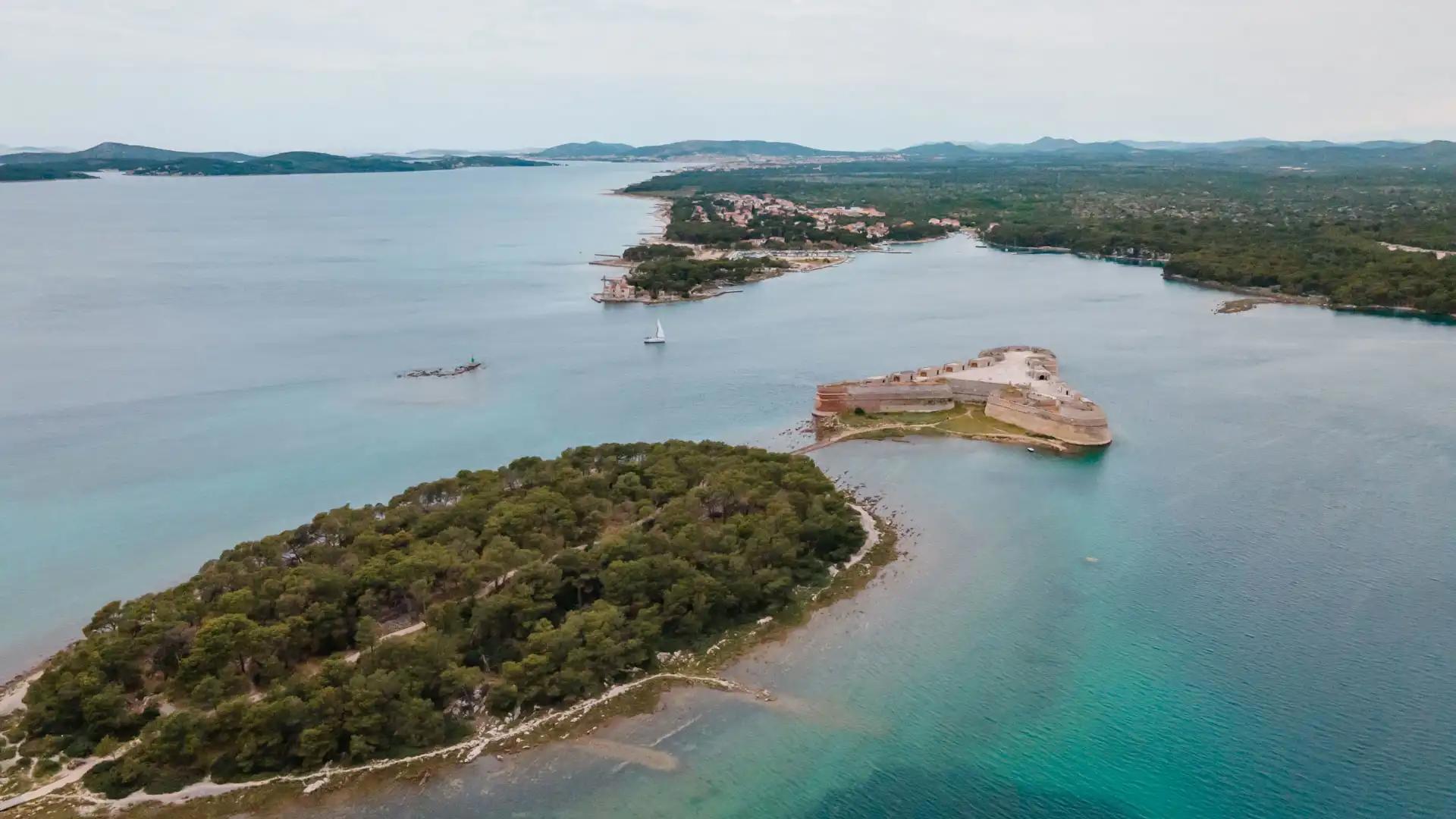
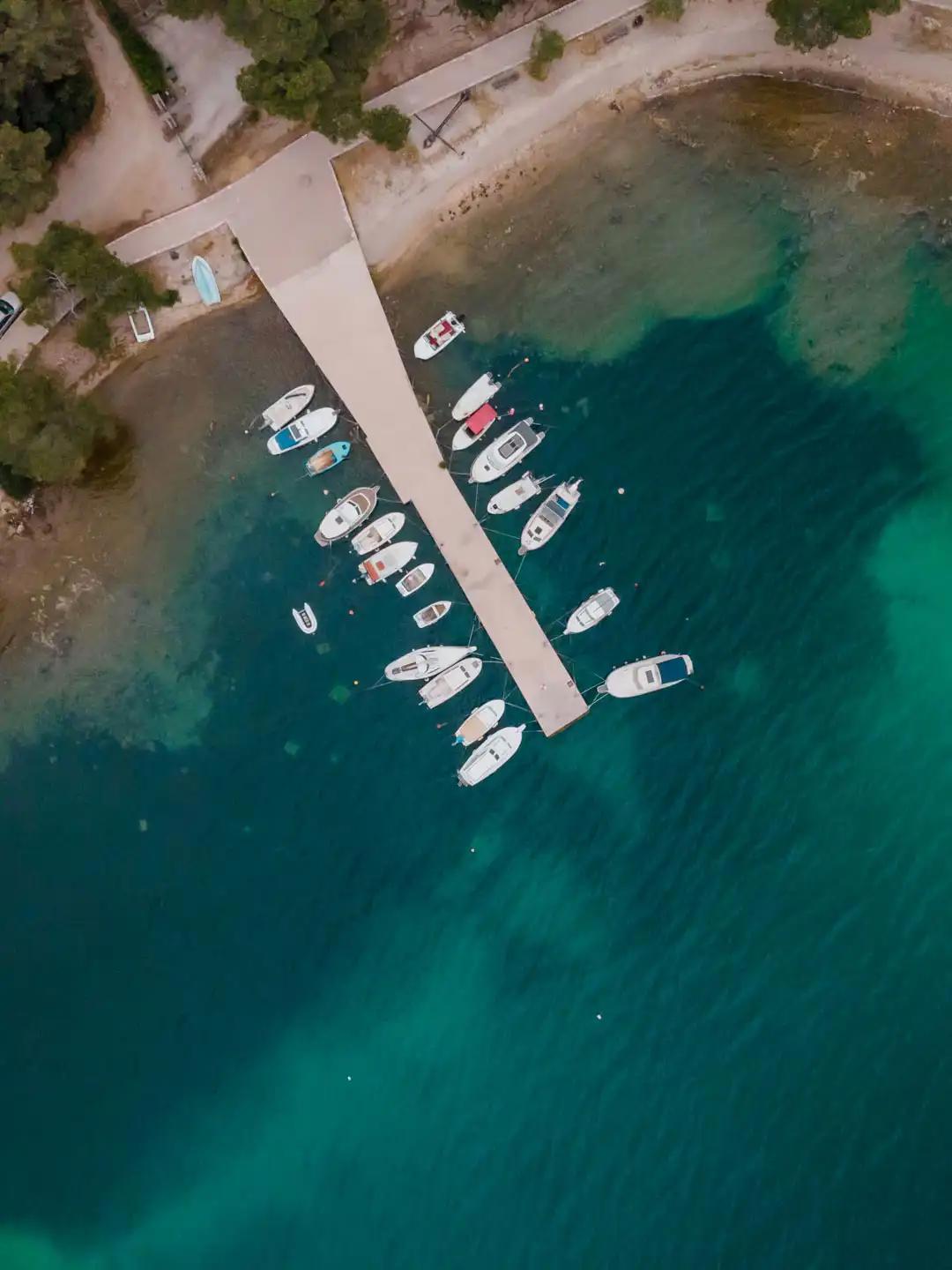
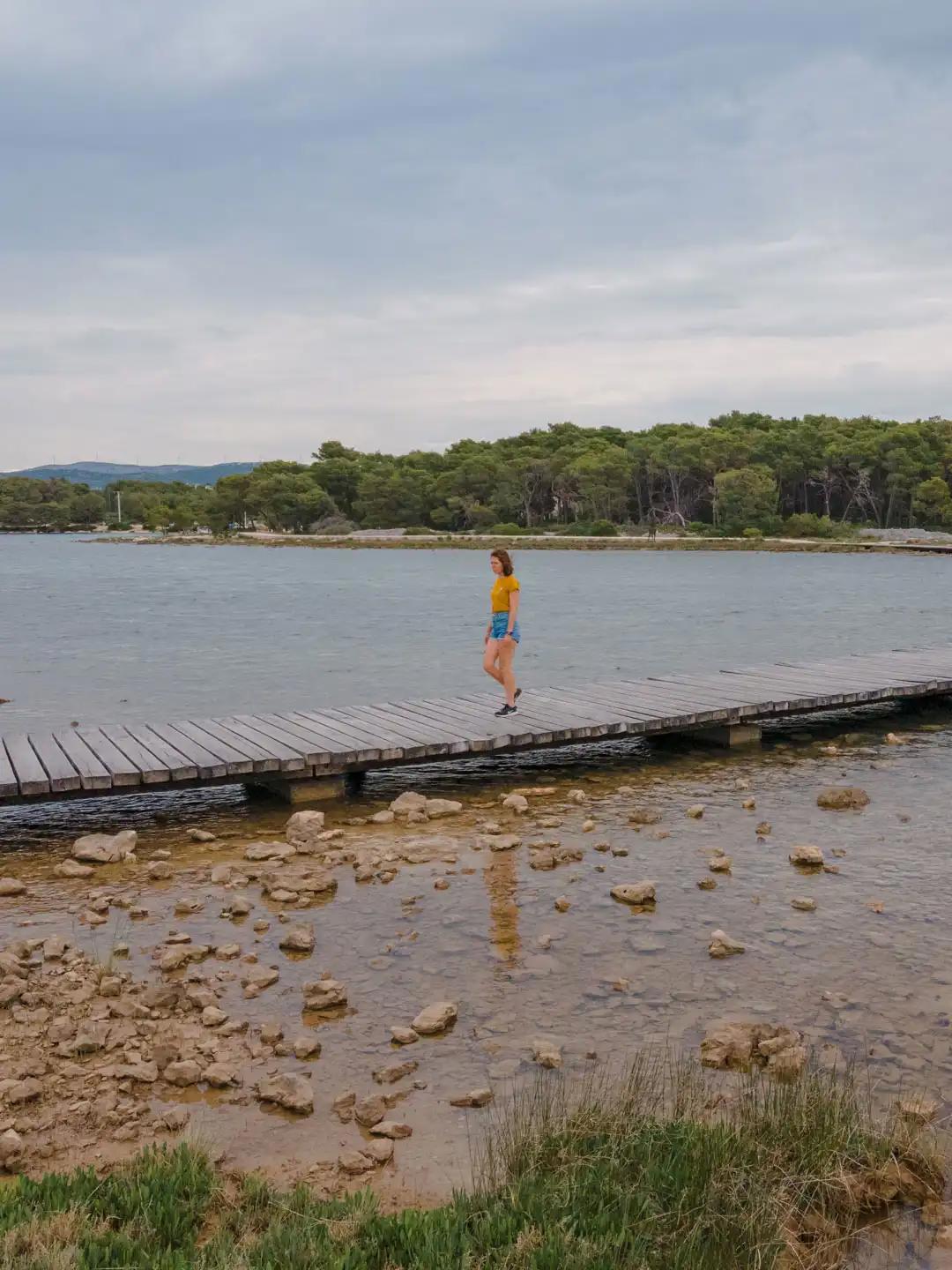
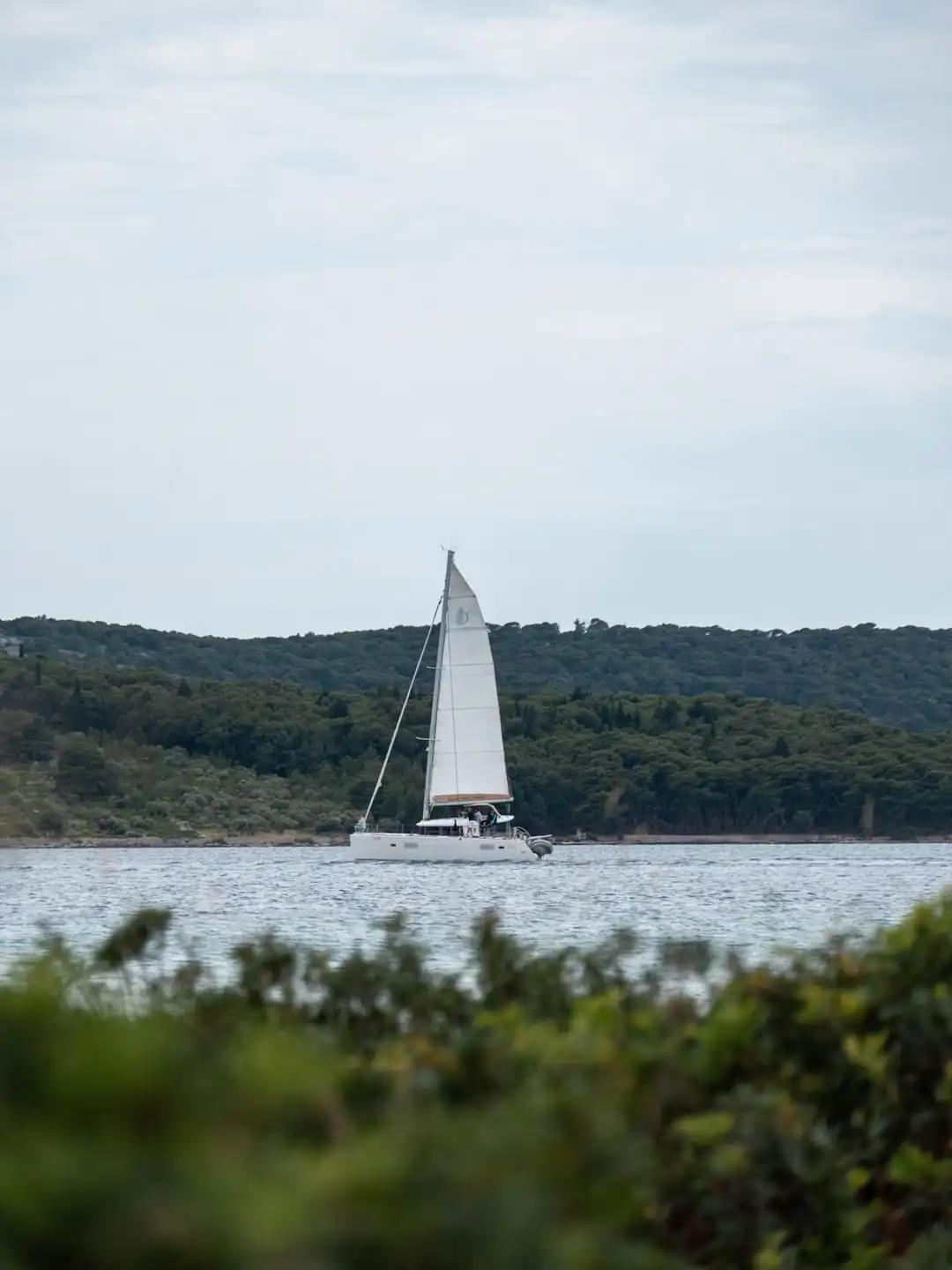
To save the day, we headed to Sibenik to discover the historic center. We were completely charmed by this fortified city with its narrow streets, its light stone houses with colorful shutters and its Saint James Cathedral.
What to see in Sibenik?
📍 Saint-Jacques Cathedral
📍 The Palace of the Dukes (opposite the cathedral)
📍 A walk through the narrow, winding streets and stairways
📍 Château Saint-Michel
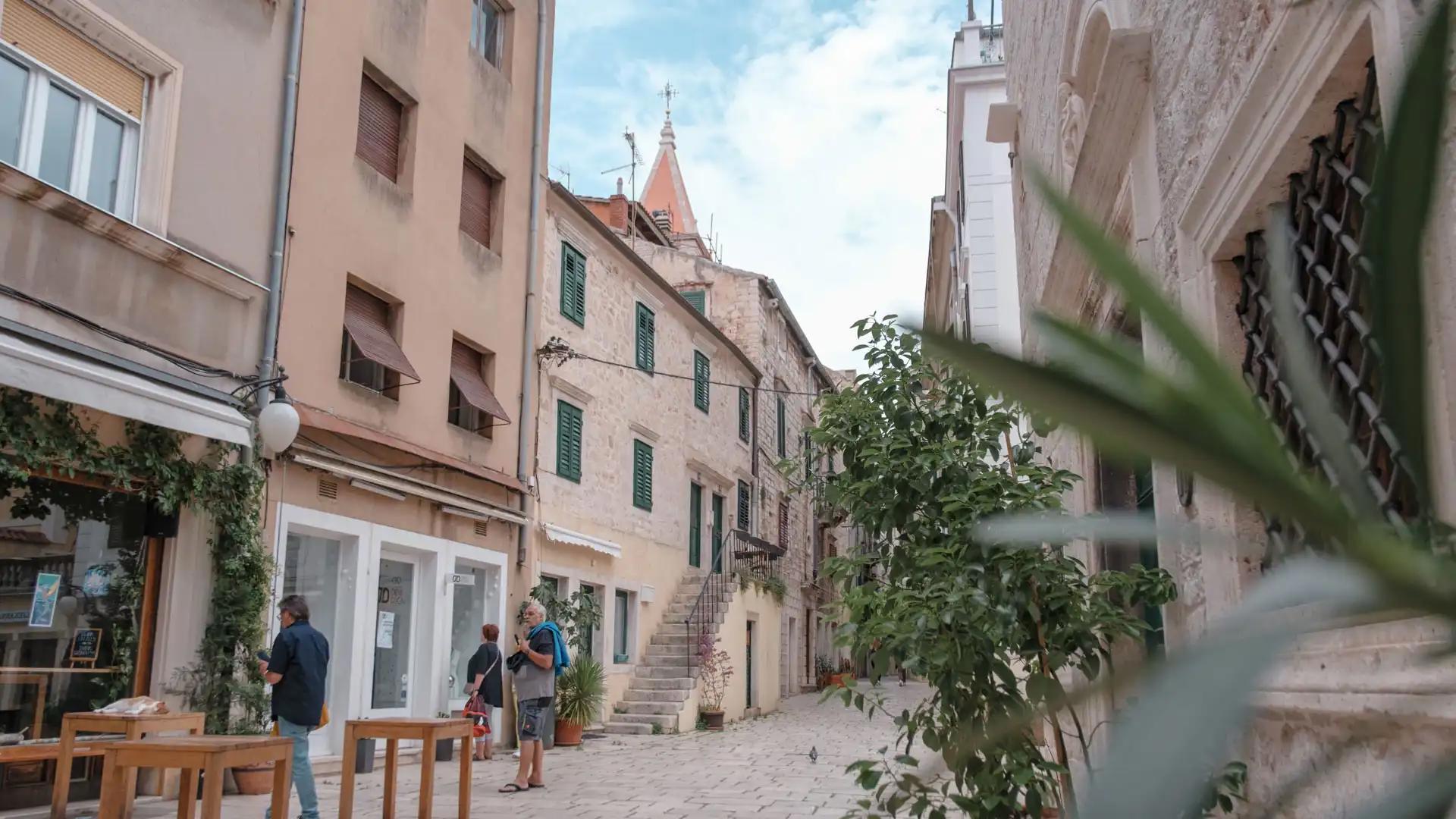
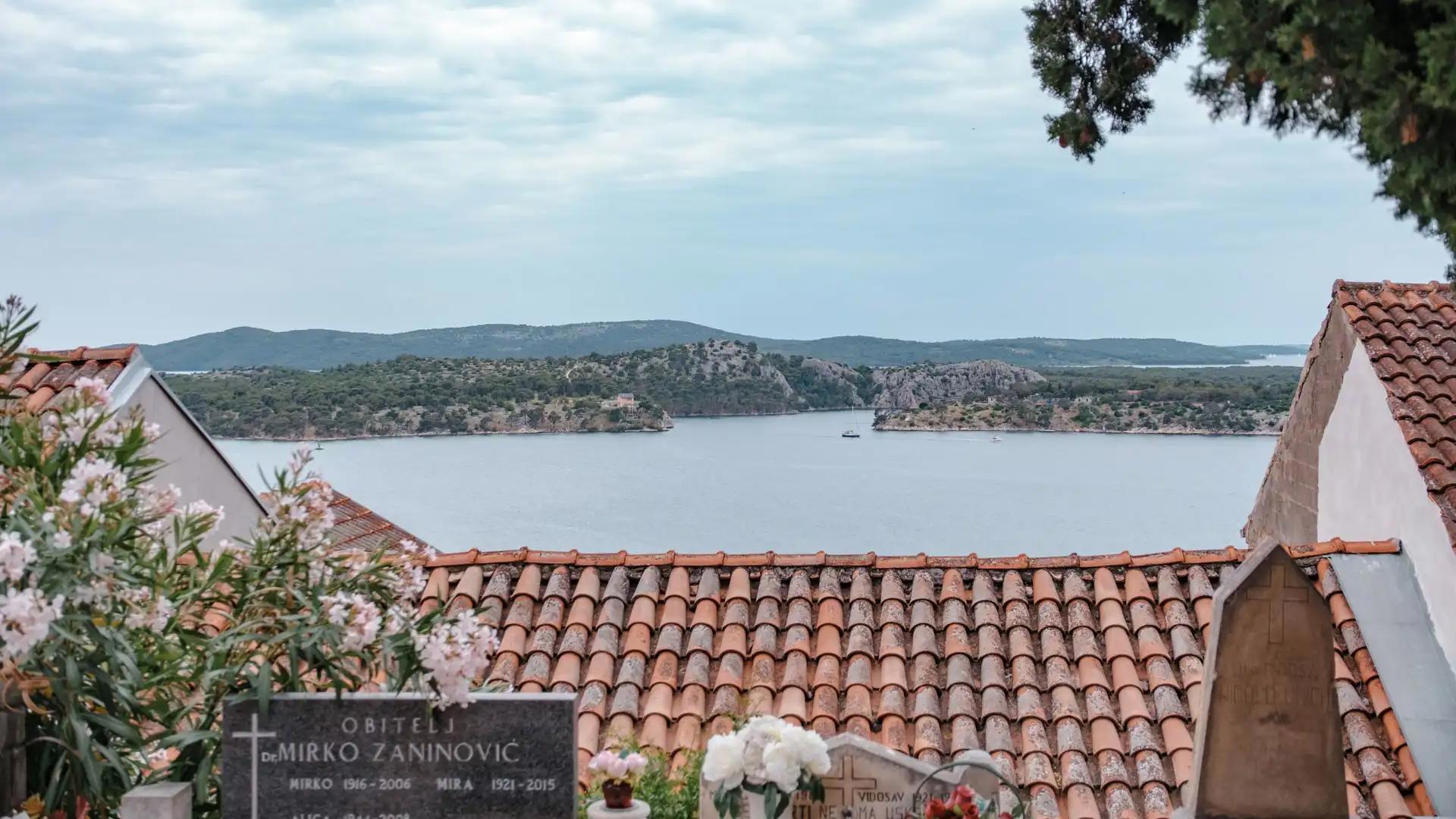
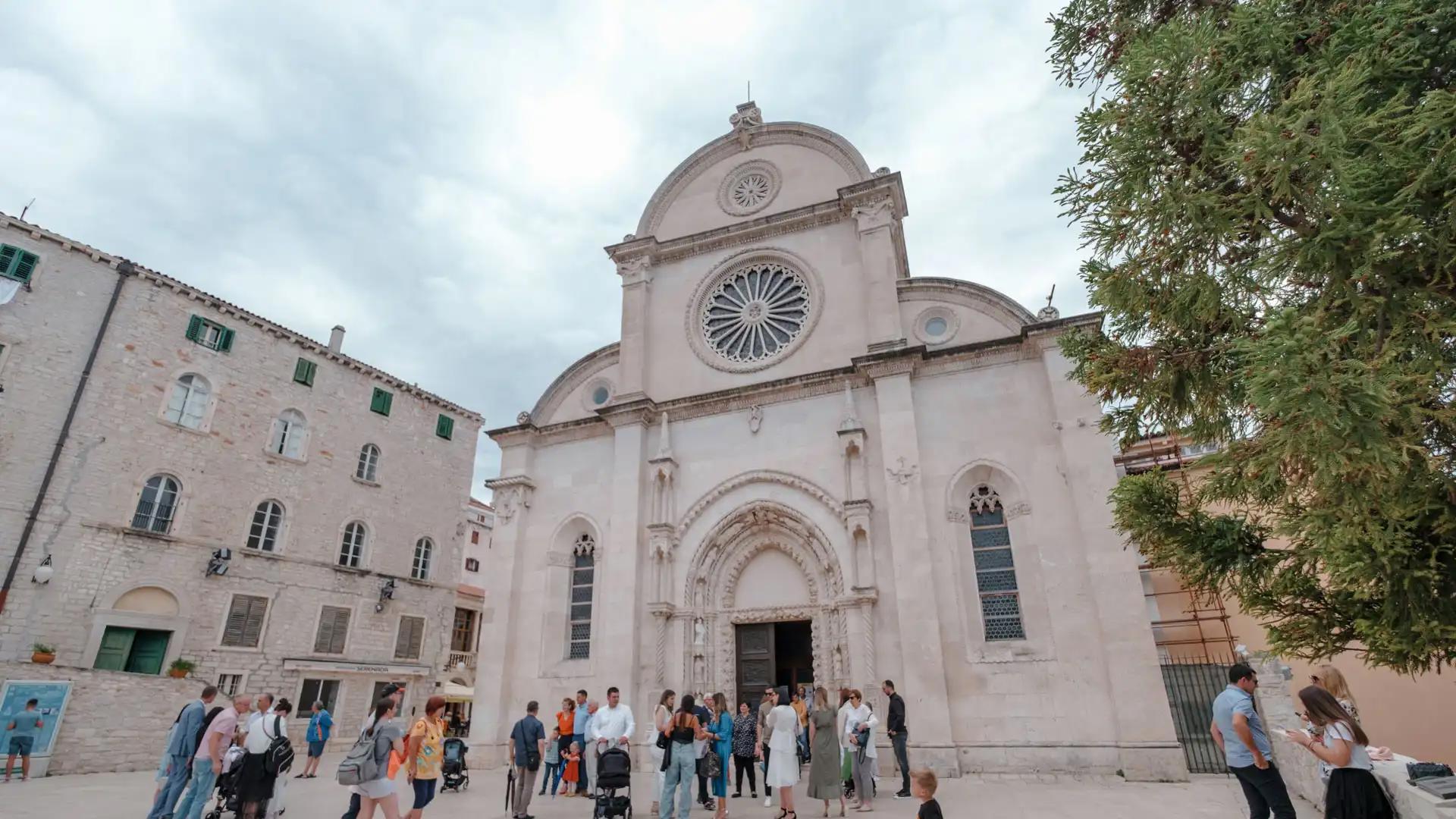
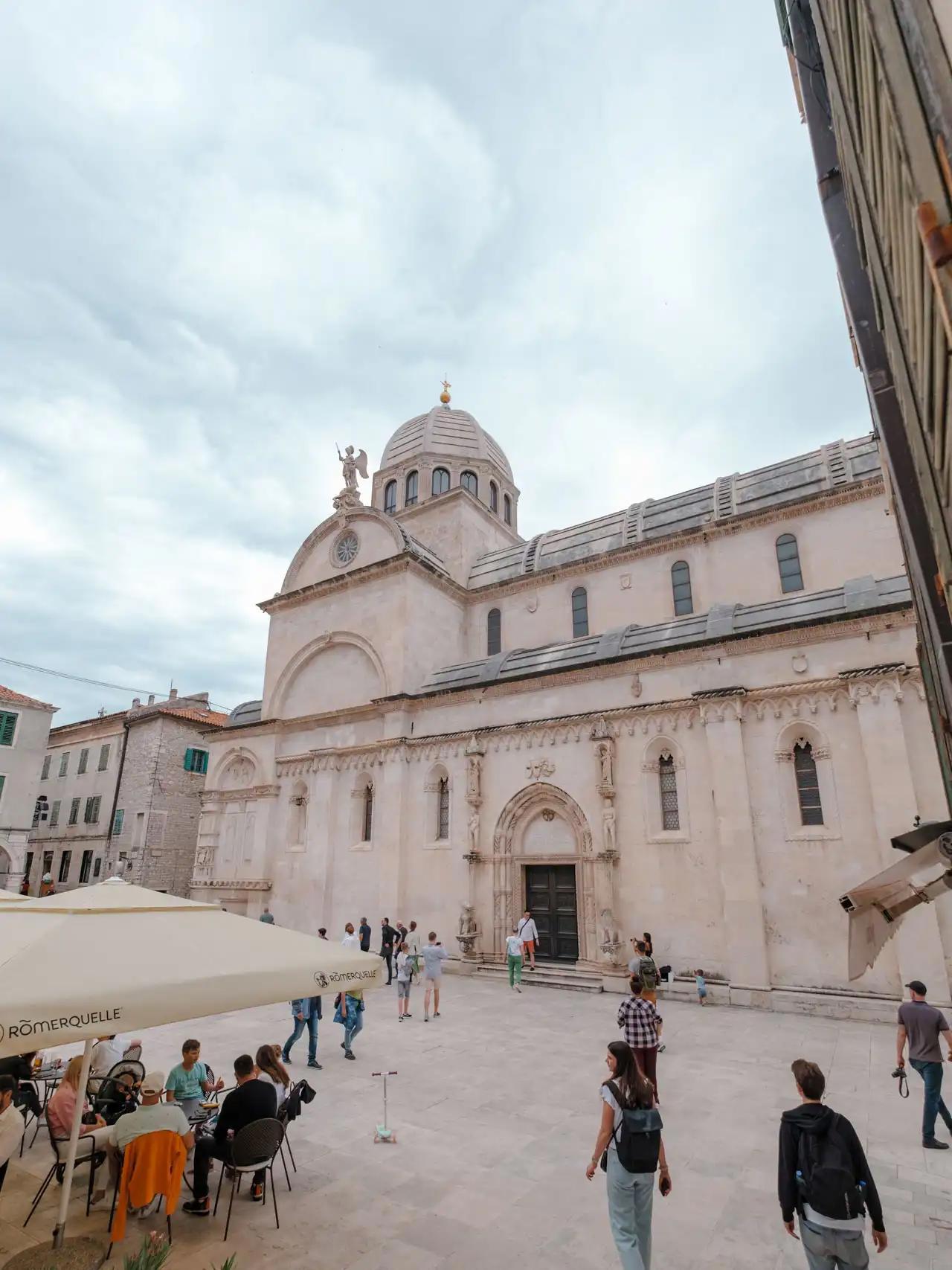
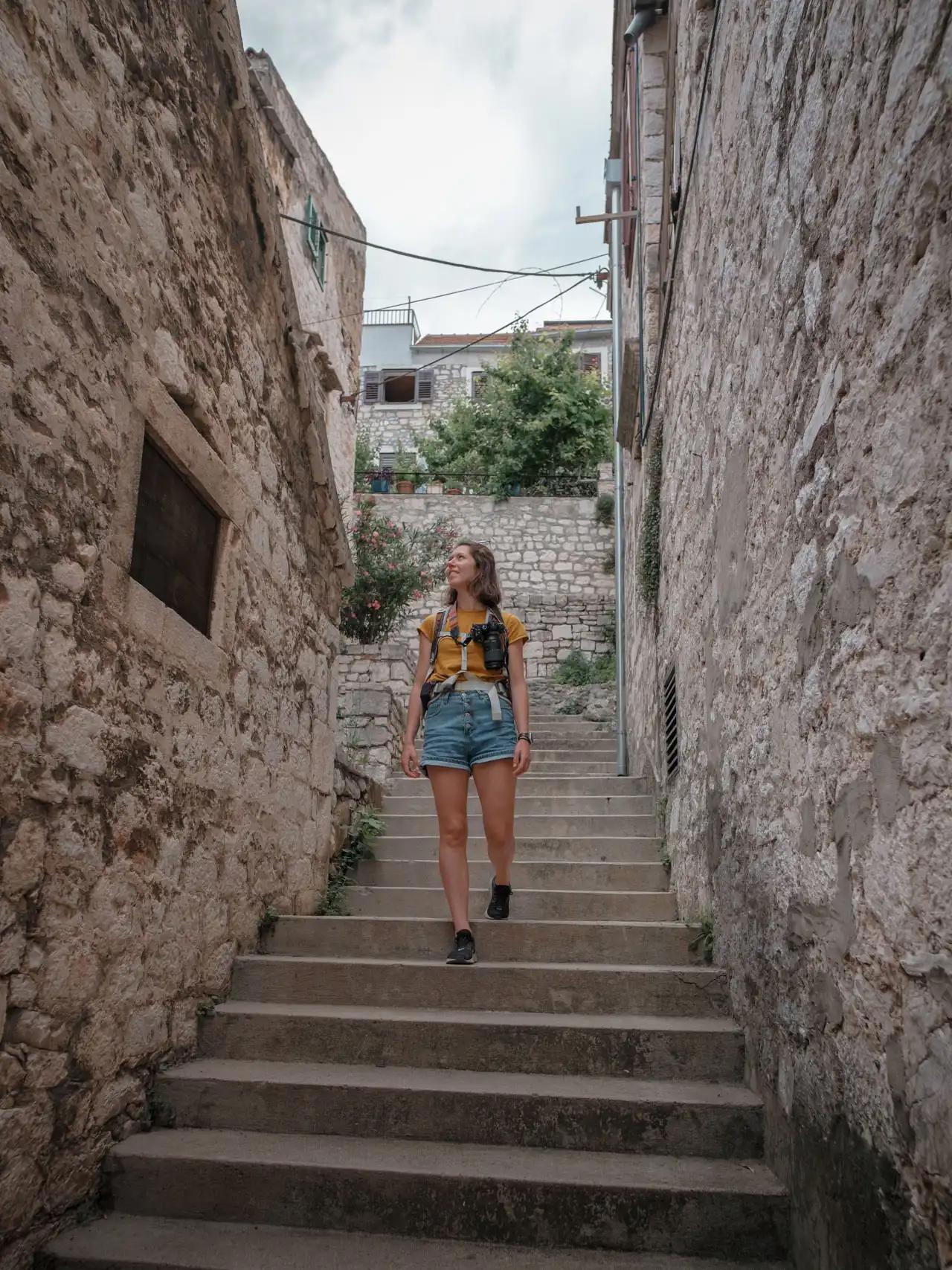
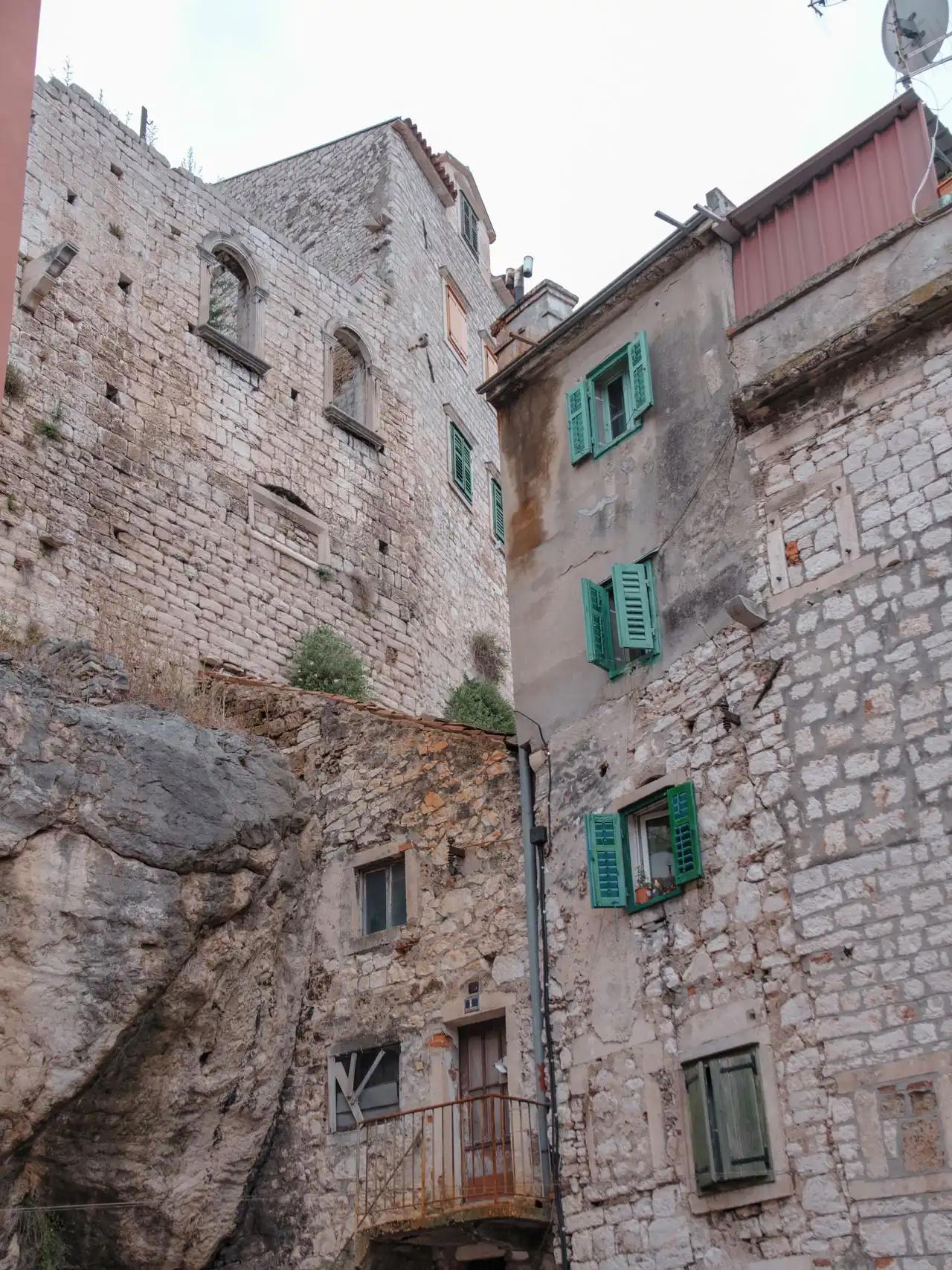
OUR TIPS FOR VISITING SIBENIK
✳︎ We chose paid parking this time to be downtown and not have to run to the other end of town in case of rain. We went to the Poljana Public Garage and paid 10 KN (±1.50 €) for an hour and a half of parking.
✳︎ Getting lost in the city's small streets is really charming, and you can come across some unusual houses.
✳︎ In lieu of paying for castle entry, the Saint-Ana cemetery offers beautiful panoramic views of the Sibenik rooftops and the Saint-Antony canal.
Sunset in the small village of Nin
We went out towards the village of Nin at the end of the day for the sunset. We didn't get the sunset we hoped for, but some shades of orange and pink brightened the late afternoon clouds. We took the opportunity to wander through this charming little town, passing through the historical gate, the Church of the Holy Cross, its small fishing port and to observe the wildlife in the salt marshes nearby.
Near Nin is the Ždrijac beach. It offers a beautiful sandy bank on one side and a stretch of sea on the other where you can watch kitesurfers!
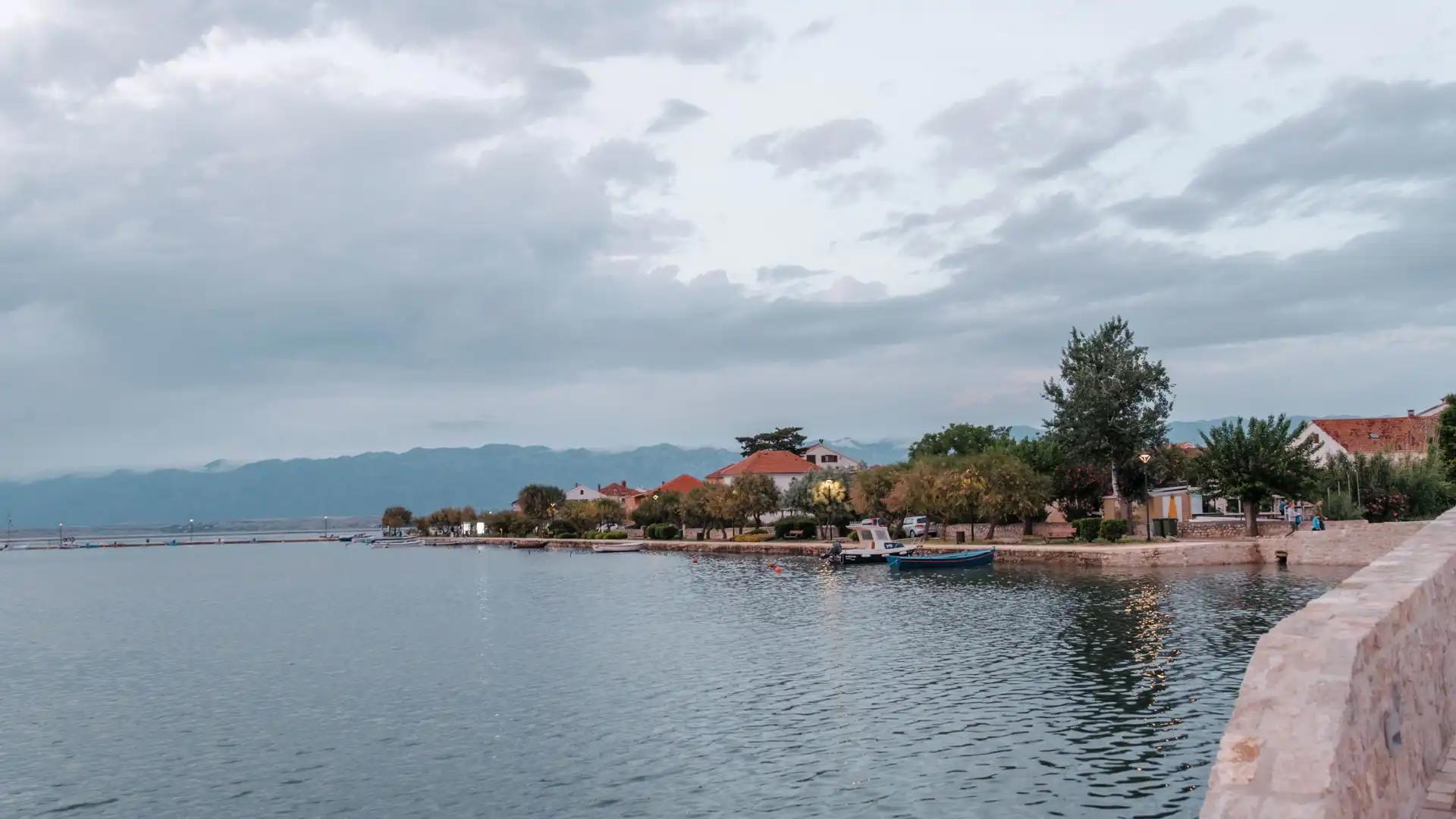
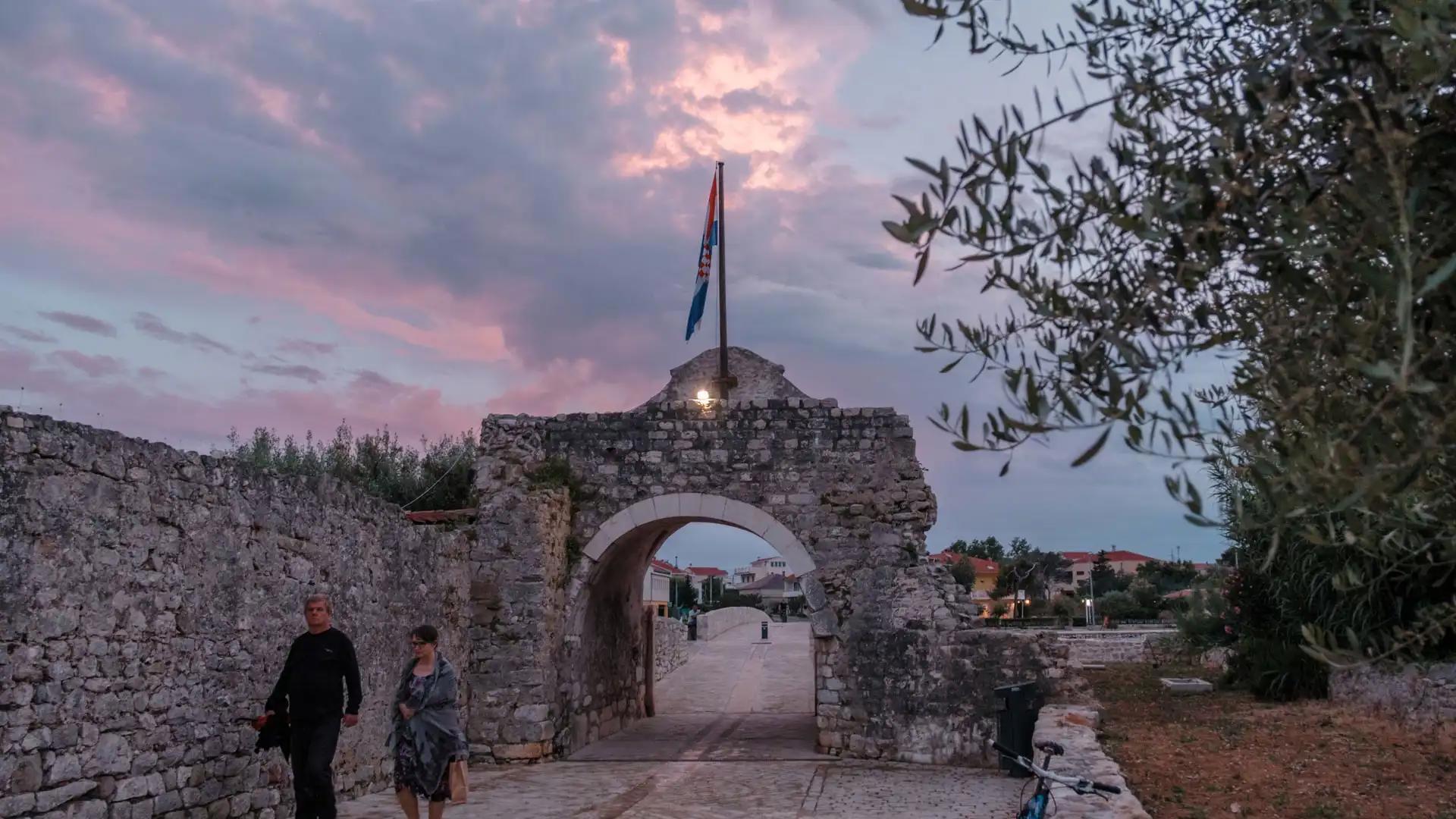
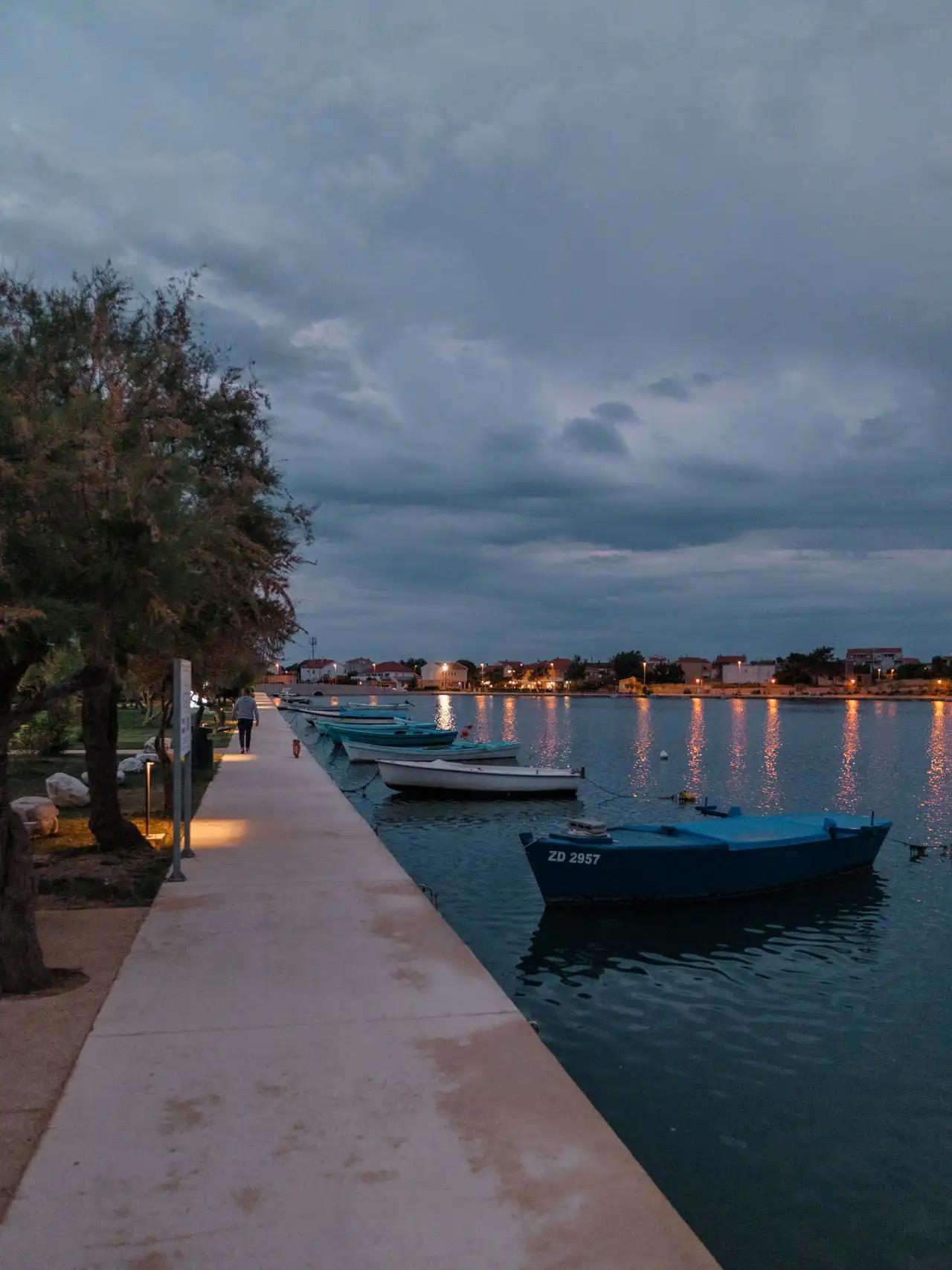
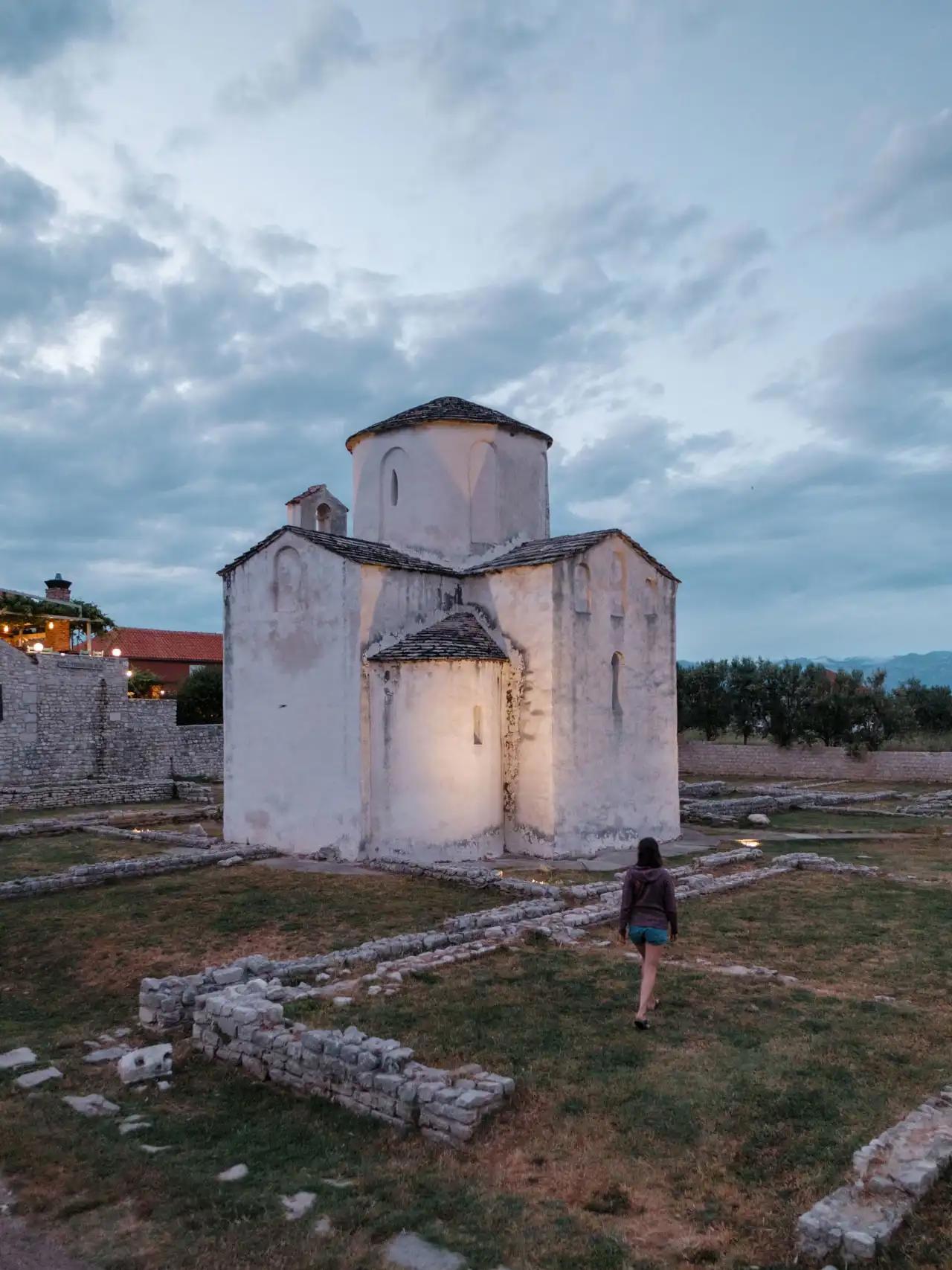

Practical information for visiting Nin
We parked in a parking at the village entrance. This one is paid during the day and free in the evening.
For the beach of Ždrijac, there is a large parking lot just before it.
Day 5: Discovering Vransko Jezero Nature Park
Hike to Lake Vrana
Vransko Jezero or the Lake of Vrana (in French) is the largest lake in Croatia. Located near the Adriatic Sea, it remains a freshwater lake. It boasts impressive fauna and flora.
We went on a hike in the Vransko Jezero Bird Reserve. Starting from the cemetery of the village of Vrana, we completed a loop on the rocky trails amidst the Croatian nature, with mountains in the background. We walked 2 kilometers through vineyards, olive trees, mountains, and the Croatian countryside.
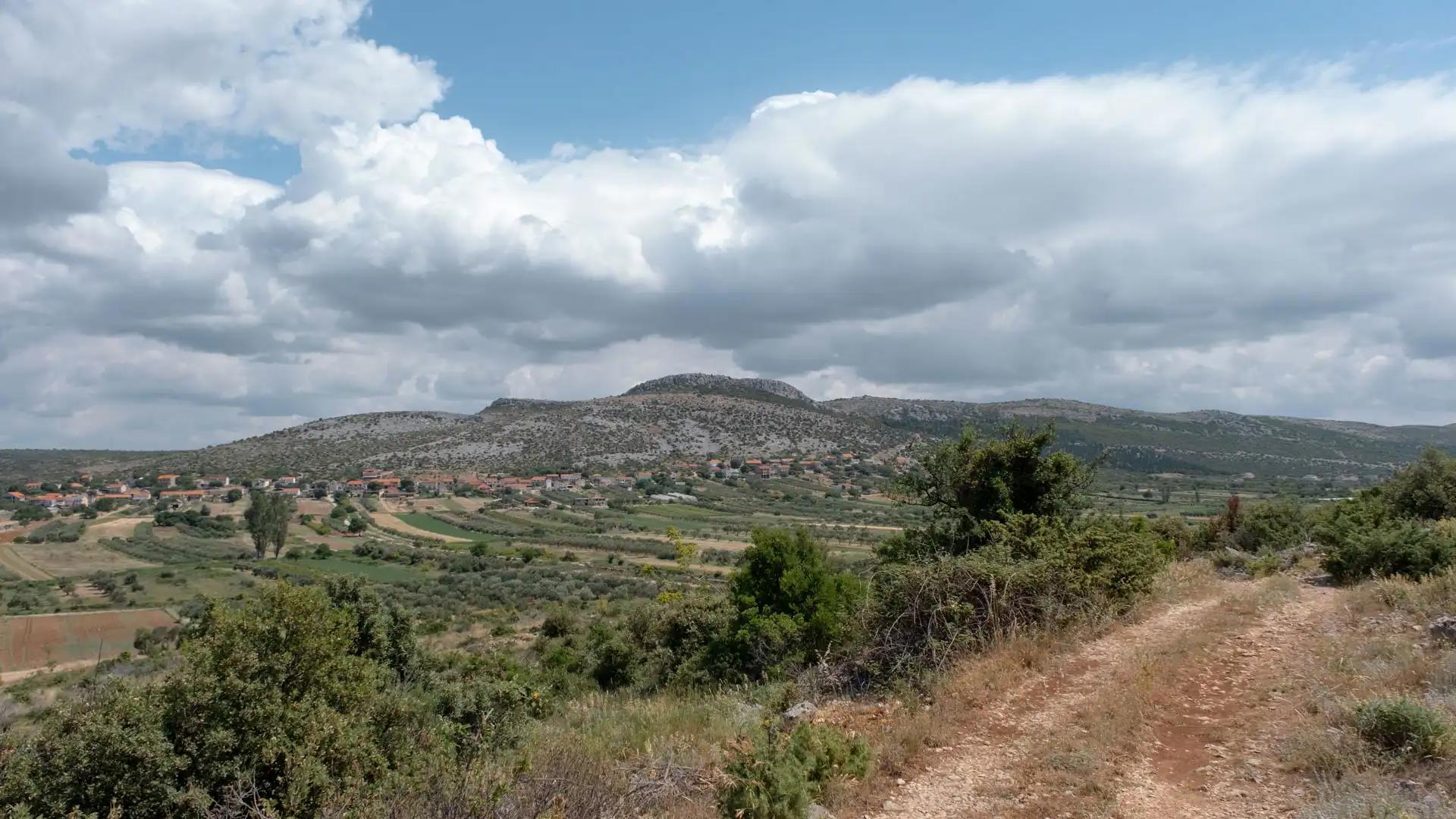
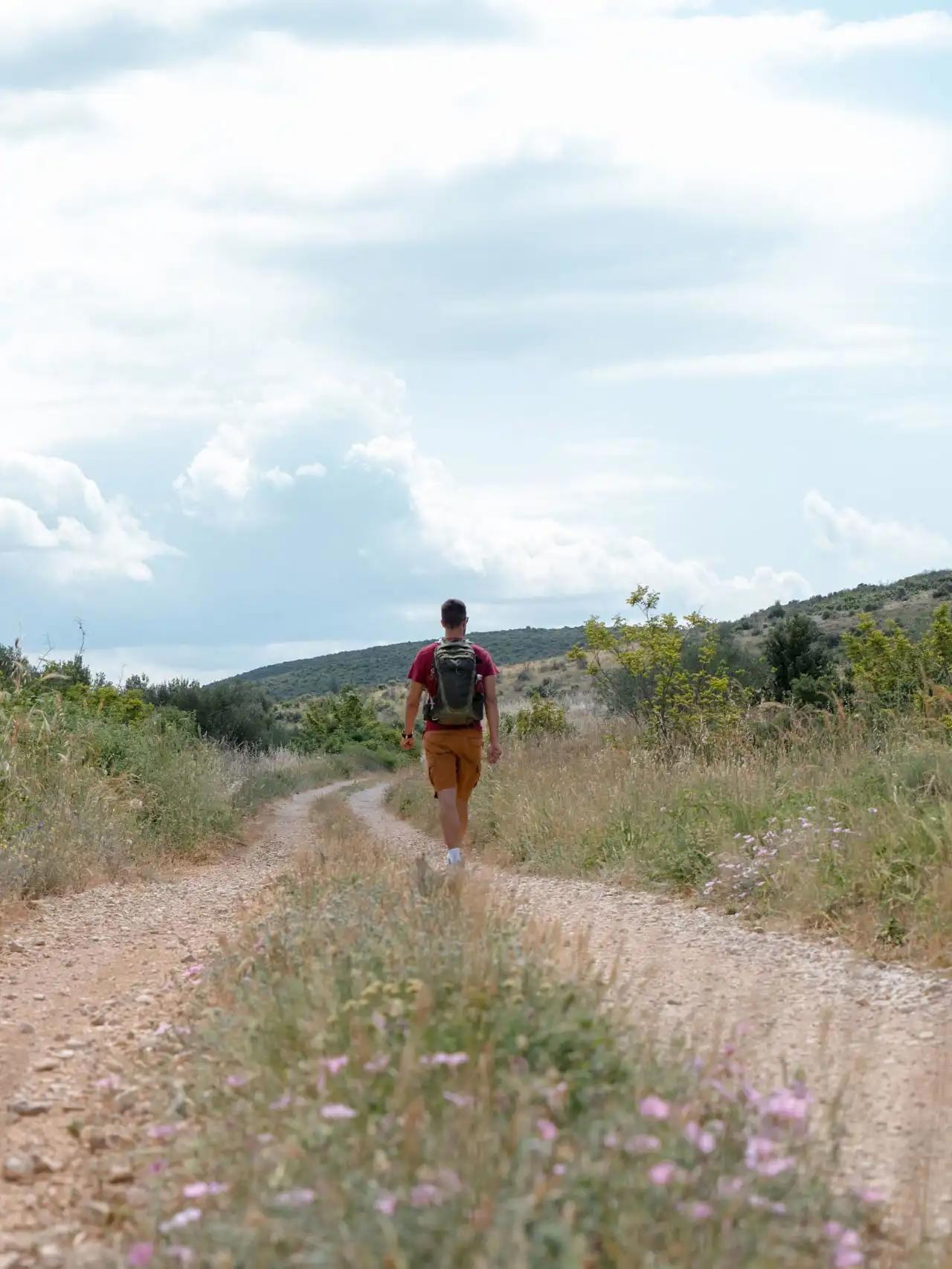
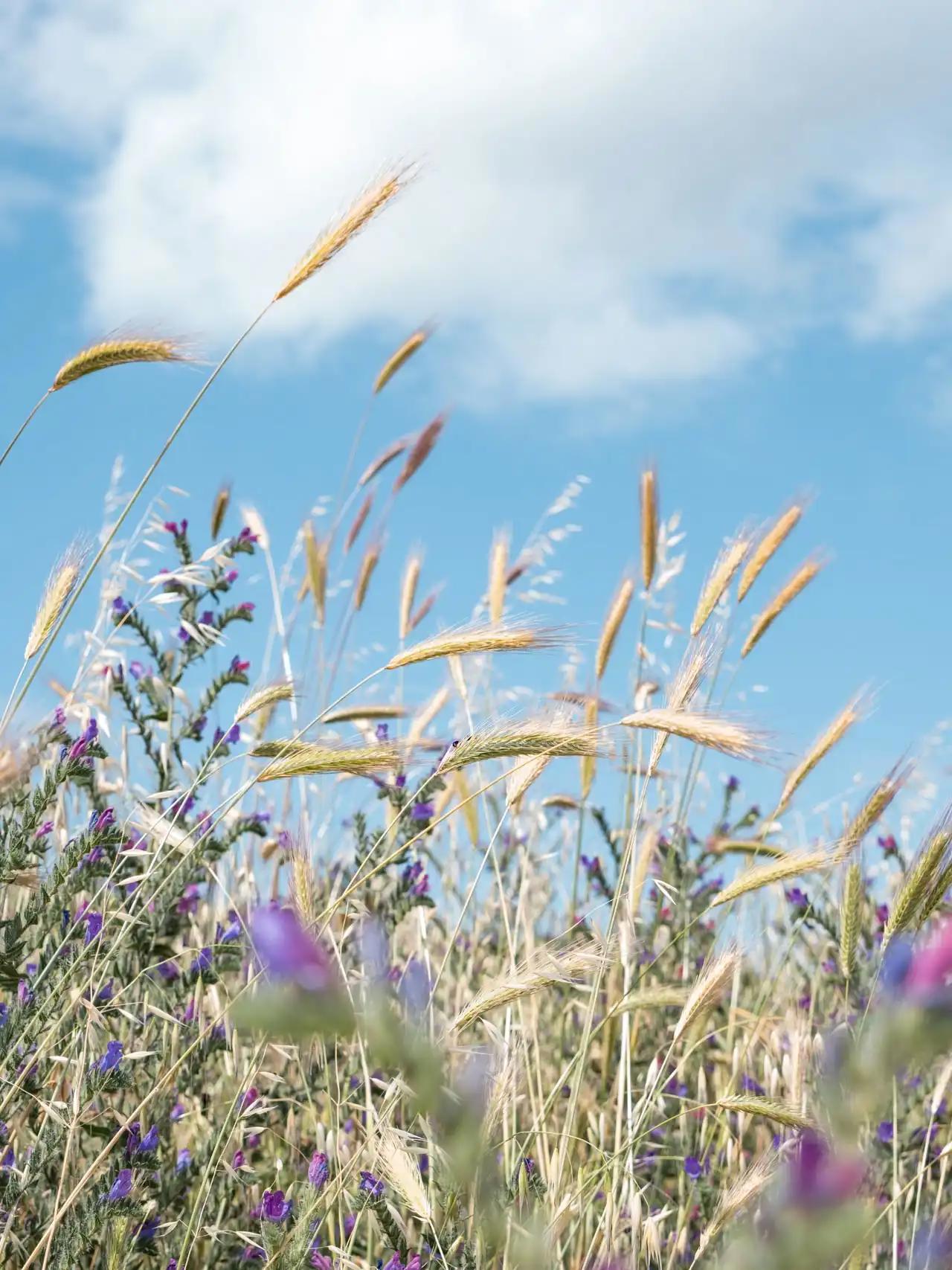
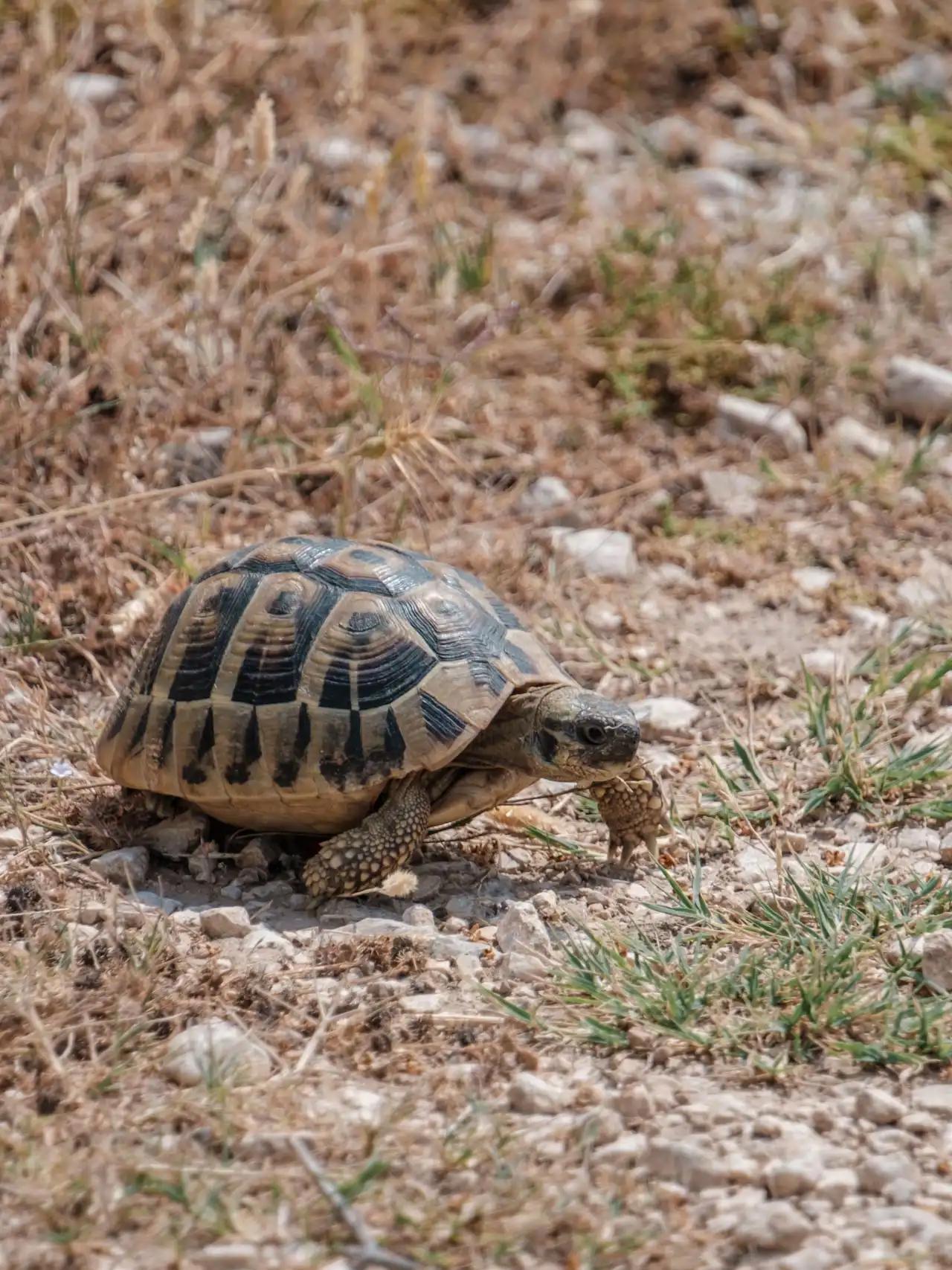
After a short climb, we discover a 180° view of Lake Vrana and its turquoise waters. The hike continues along the lake shores where we can see some bird species taking flight from the reeds and marshes.
On our route, we were surprised (twice) to encounter a land tortoise. With their brownish shells, they blend into the vegetation, and you have to be careful not to step on them! We were also fortunate to observe some bird, butterfly, and insect species.
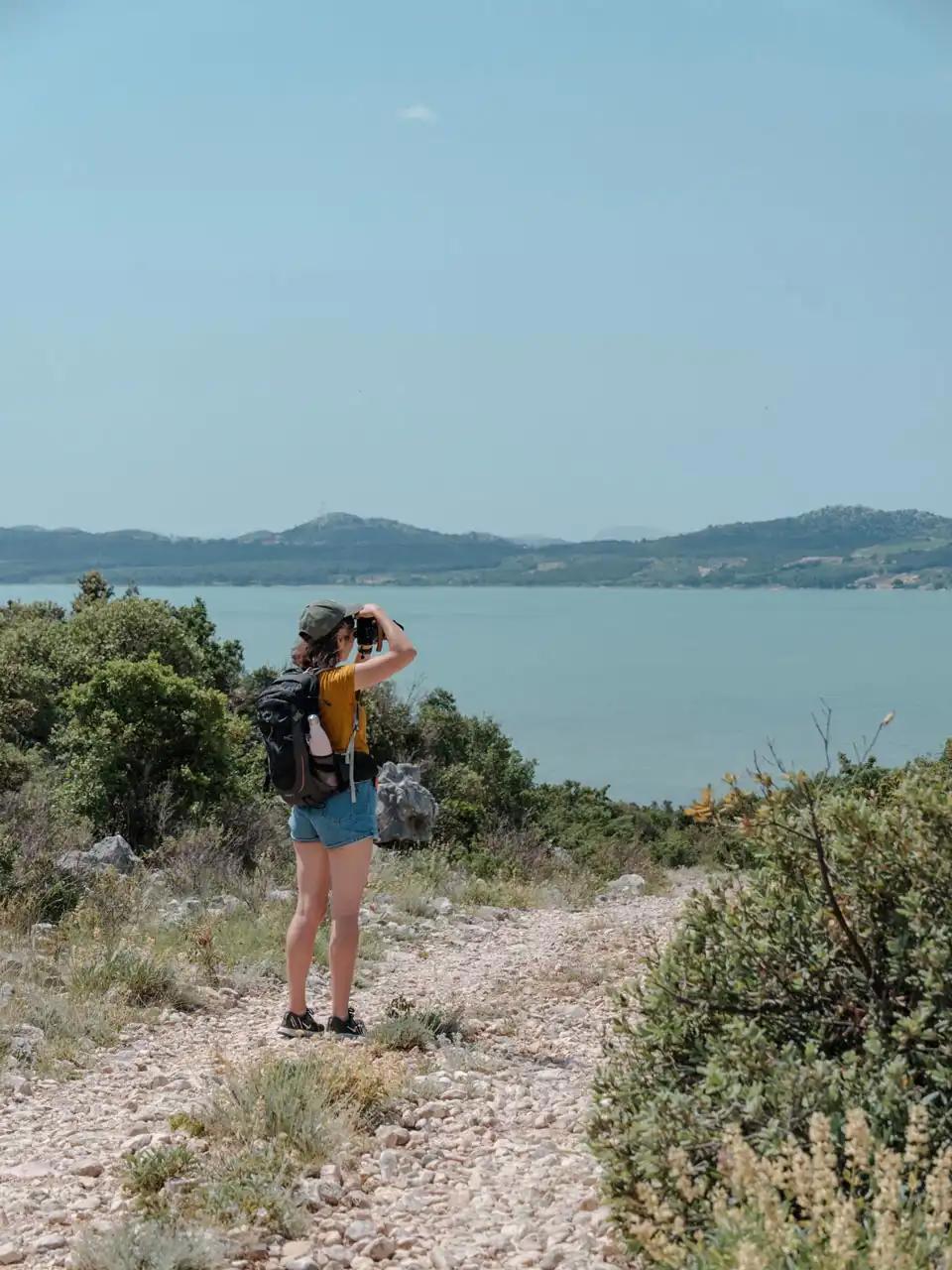
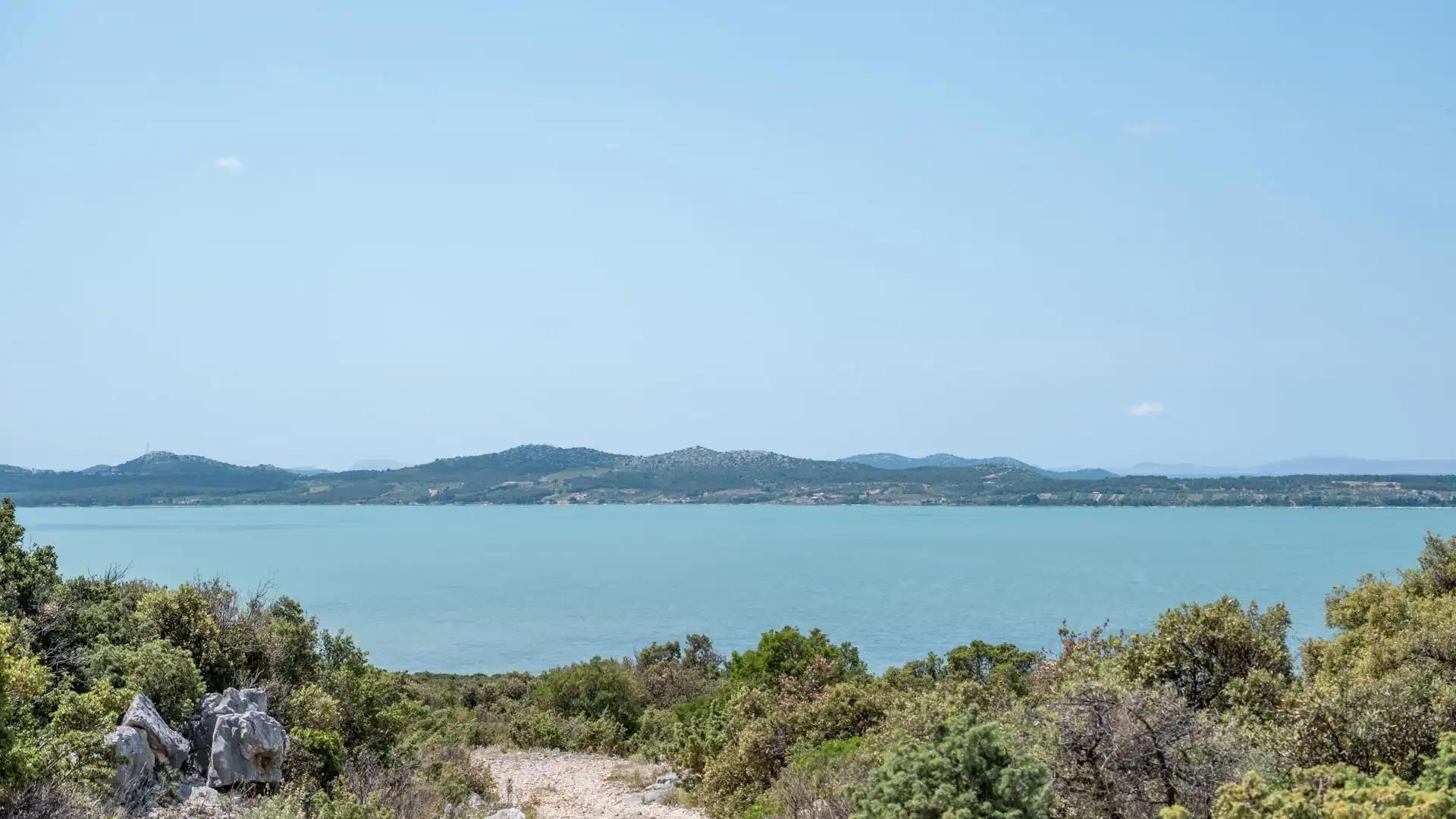
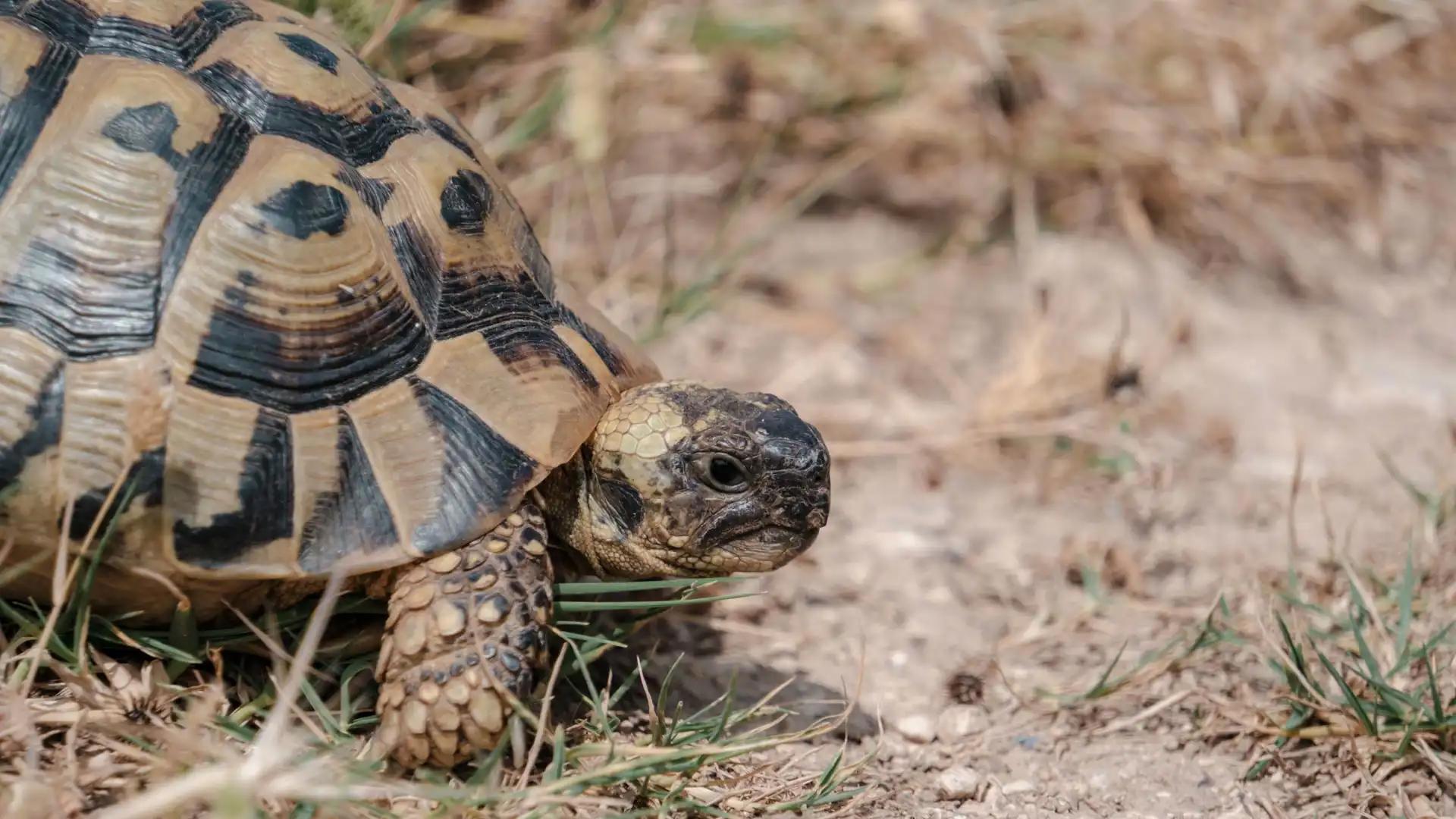
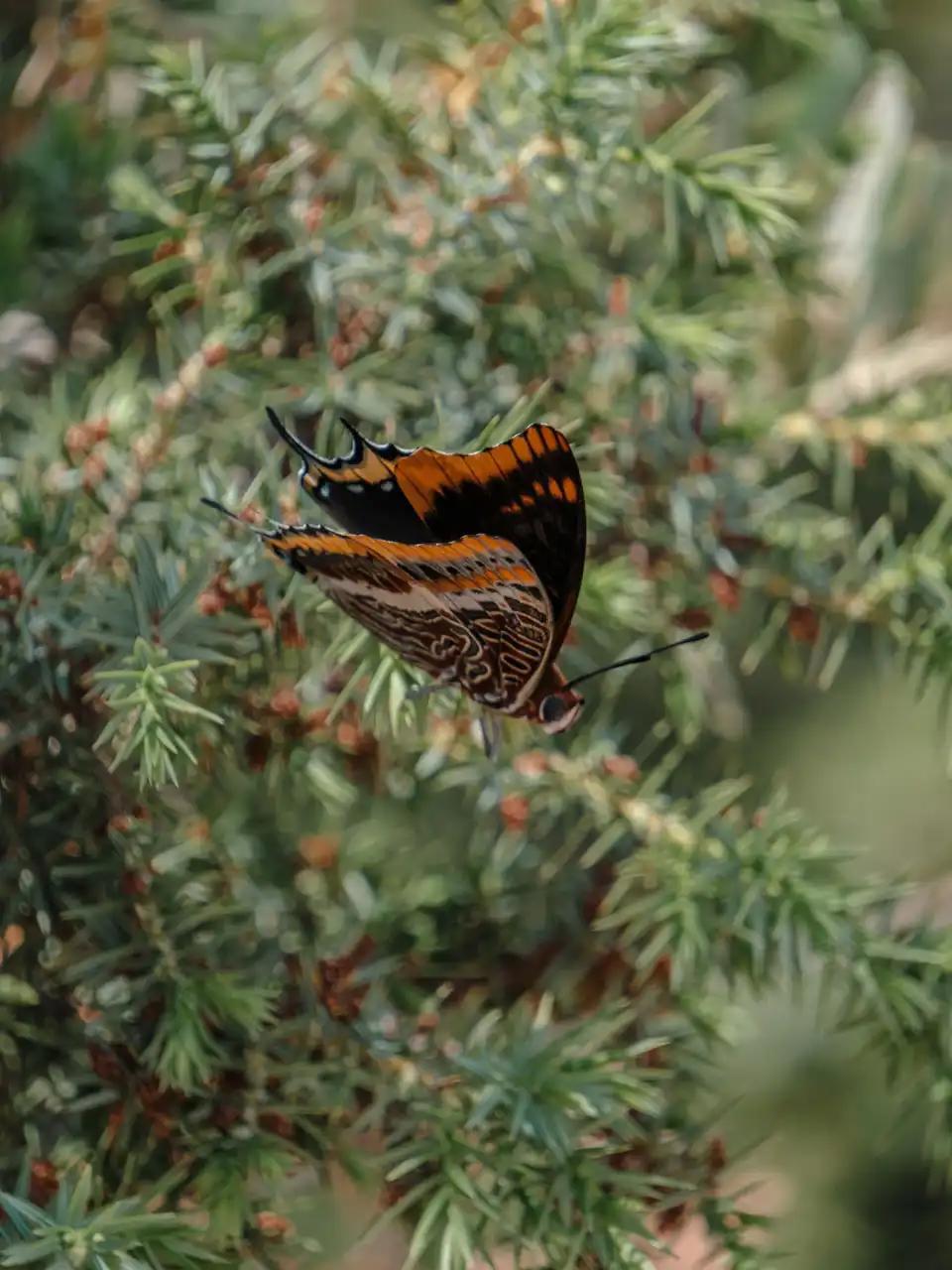
Practical Hiking Information
Distance • ±6 kilometers
Itinerary • GPX track of our walk at download here.
Parking • Google Maps location at find it here.
Ornithological Point of Lake Vrana
After this hike deep in the Croatian nature, we went to the ornithological point of Lake Vrana. We were disappointed with our visit. This area is very busy and tourists are disrespectful (children running, talking loudly, crying, etc). Result: very few birds present. Perhaps it's better to go there early in the morning or in the evening before sunset.
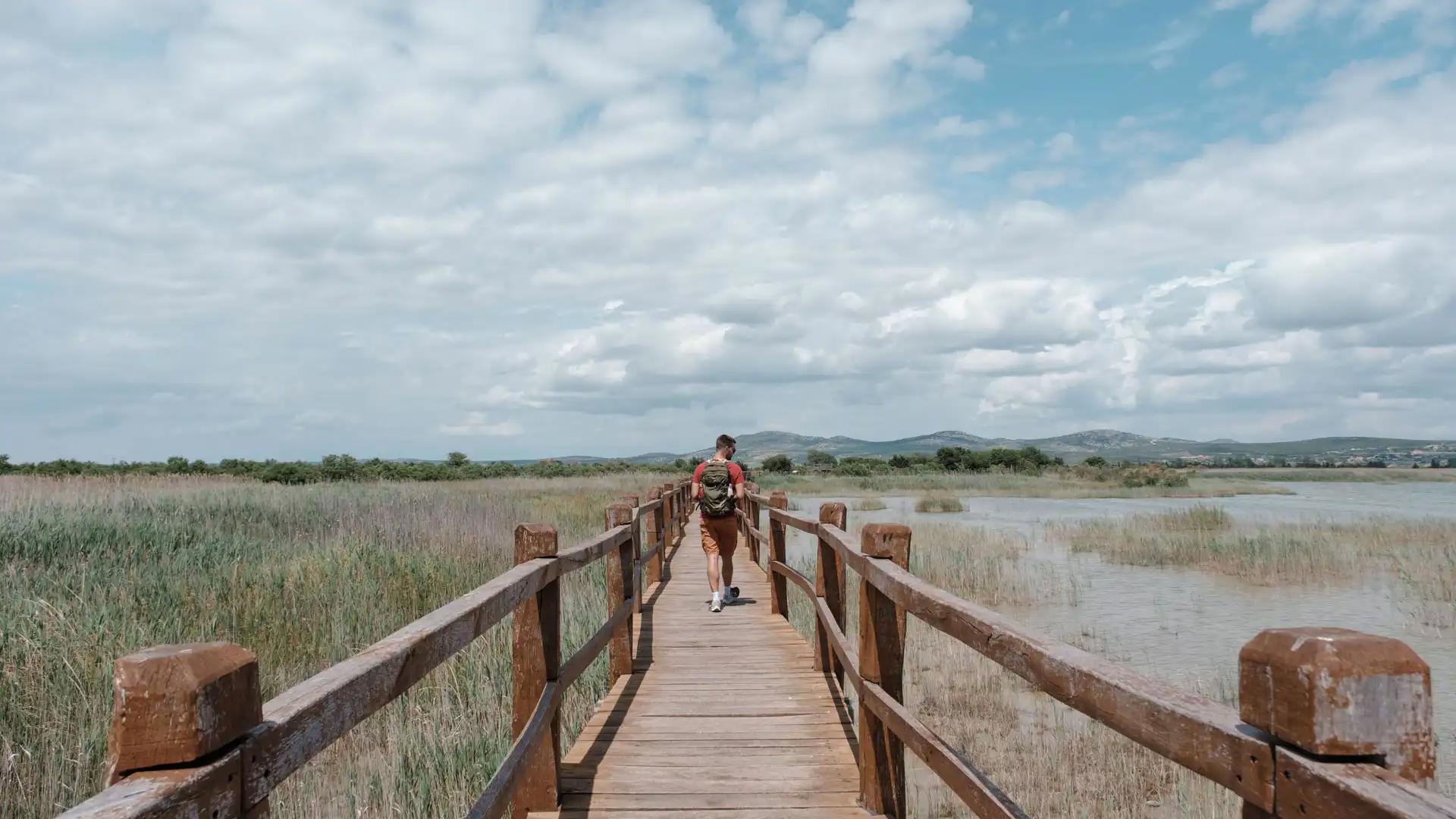

Relaxation at Lumbrak Beach
To end this beautiful day, we stopped at the Lumbrak plaza. An opportunity to swim in the Adriatic Sea and cool off after the hike in Vransko Jezero National Park. After putting on our swimsuits, we plunged into this turquoise water at the perfect temperature for the end of May. Around us, some pine trees complete this wild and preserved cove. However, watch your feet, sea urchins and pebbles cover the floor of this beautiful Croatian beach.
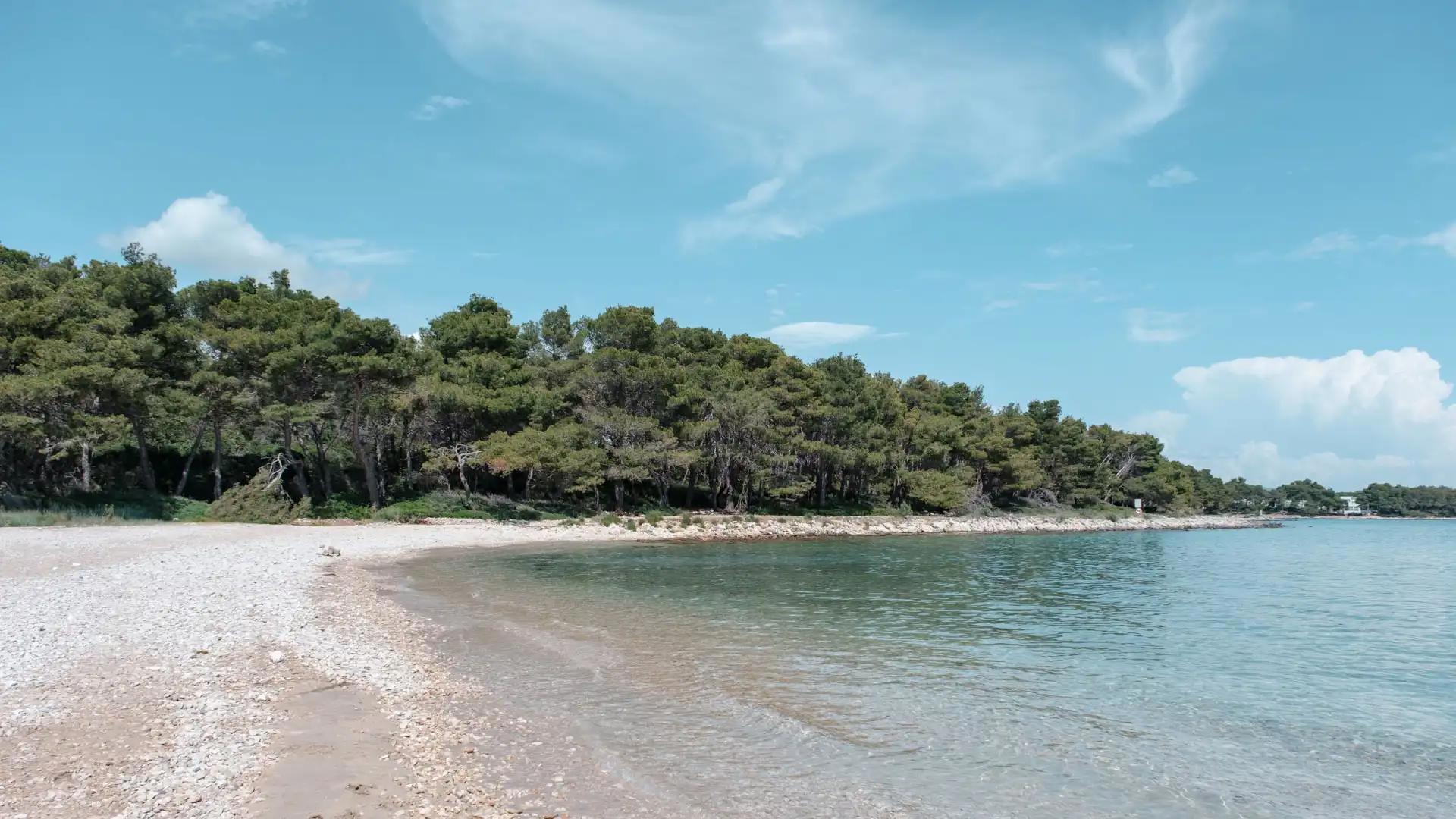
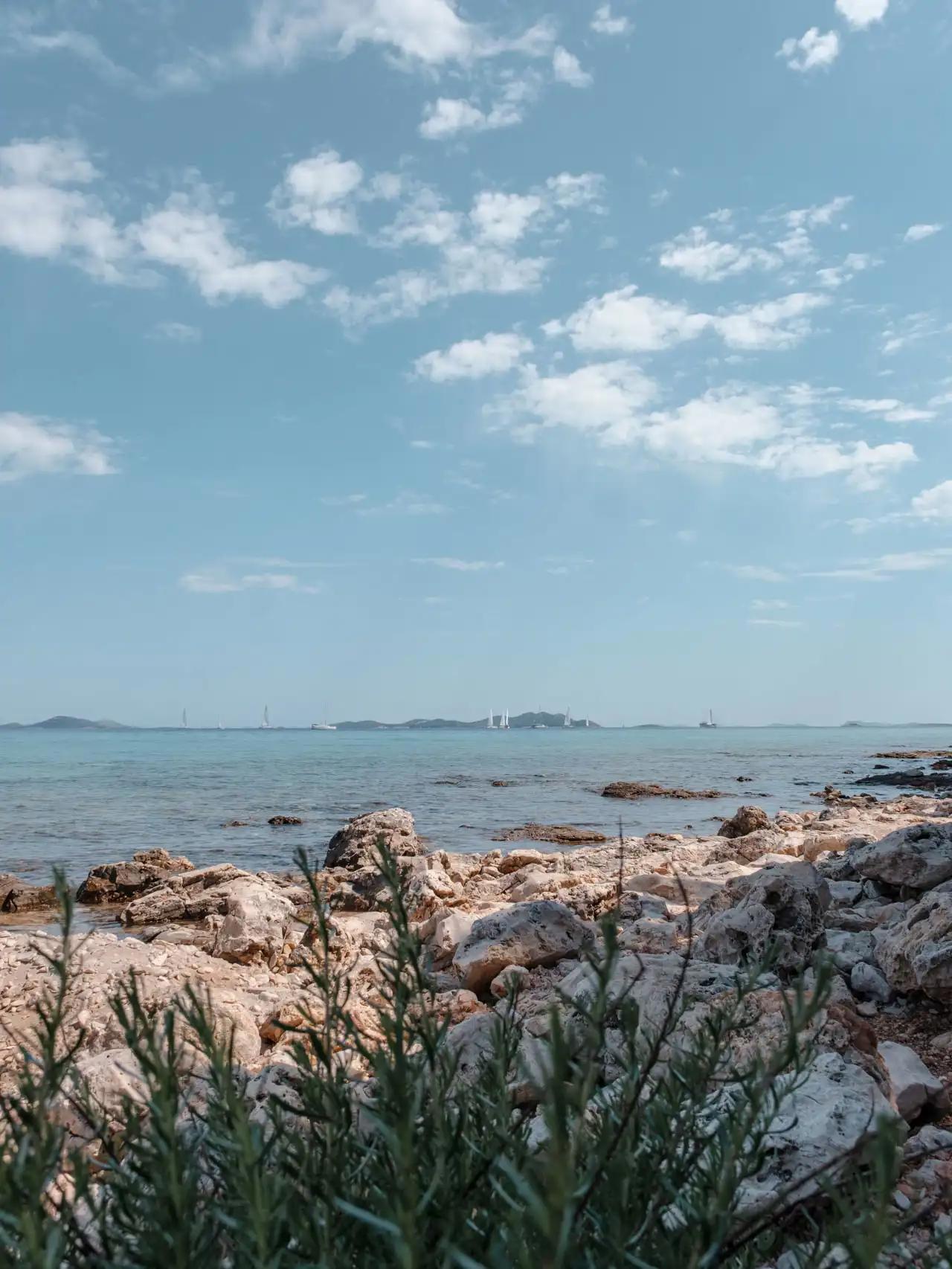
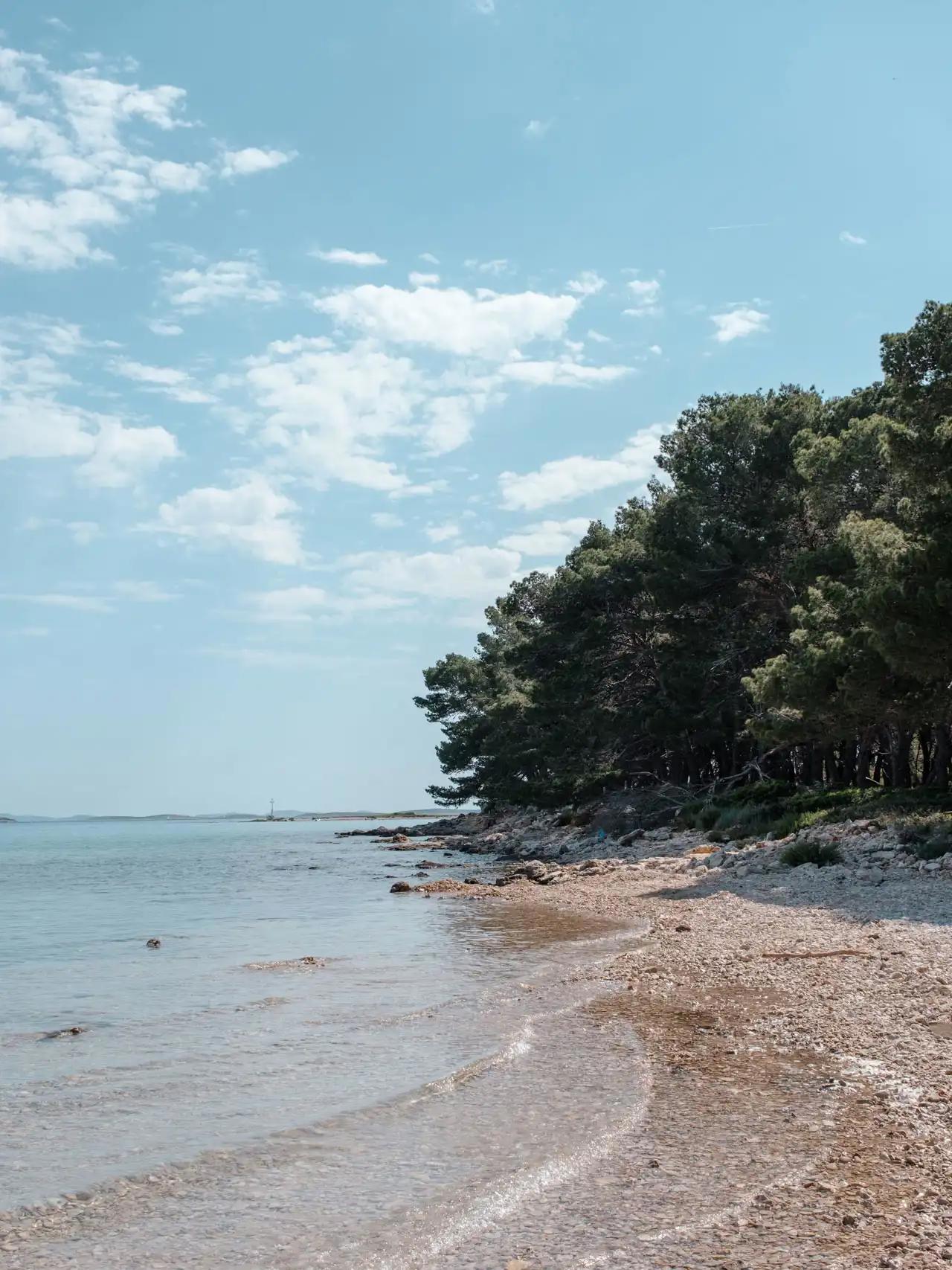

It is on this small, wild cove that we end our story in Croatia. We spent 5 incredible days discovering a very small part of this country on the Adriatic coast (and juggling between the showers some days). We will come back, for sure, to discover the islands, the mountains and the other natural, cultural and historical wonders of Croatia.
Don't hesitate to write a small comment at the bottom of this page if you have any other questions! 😉

0 comment